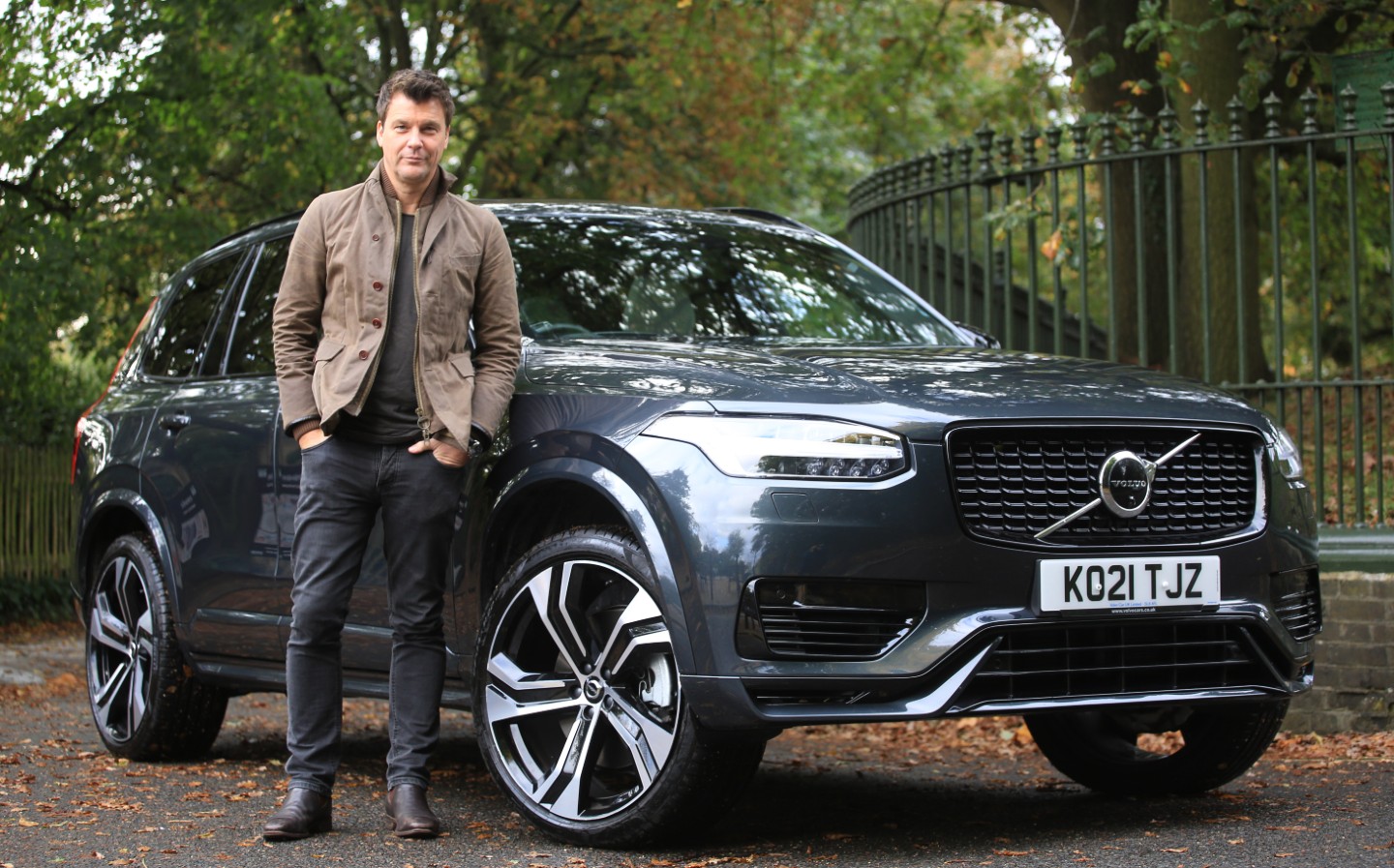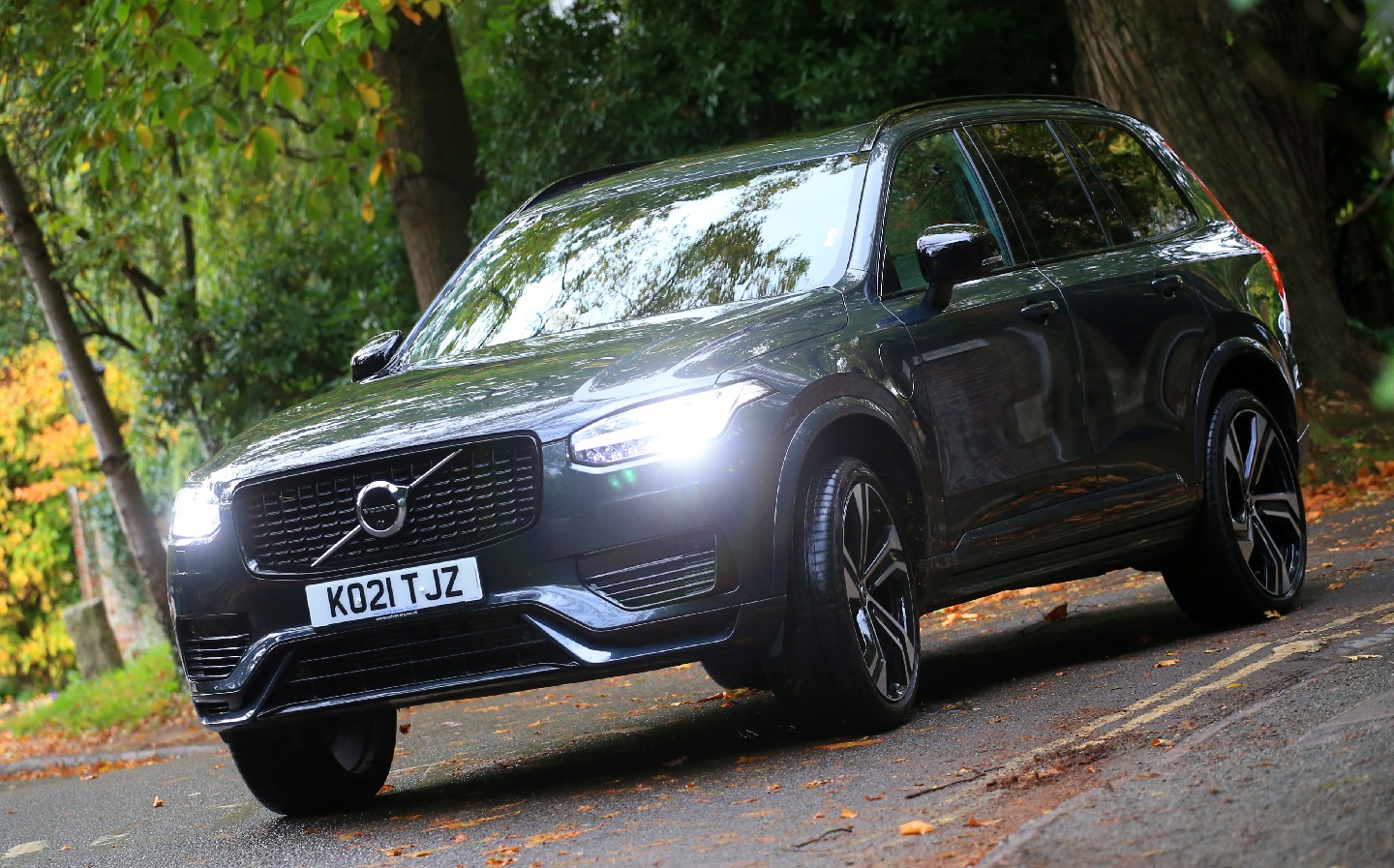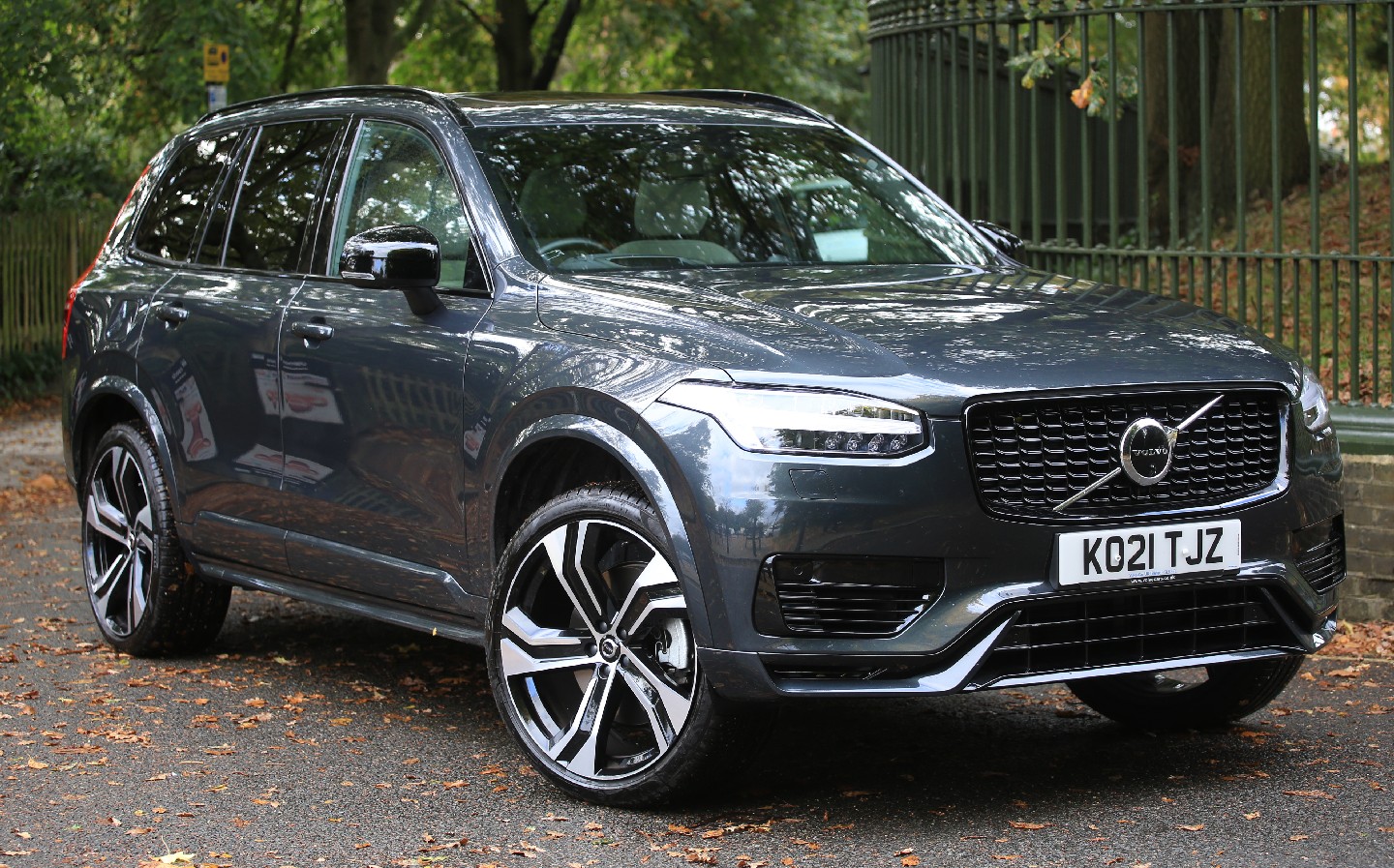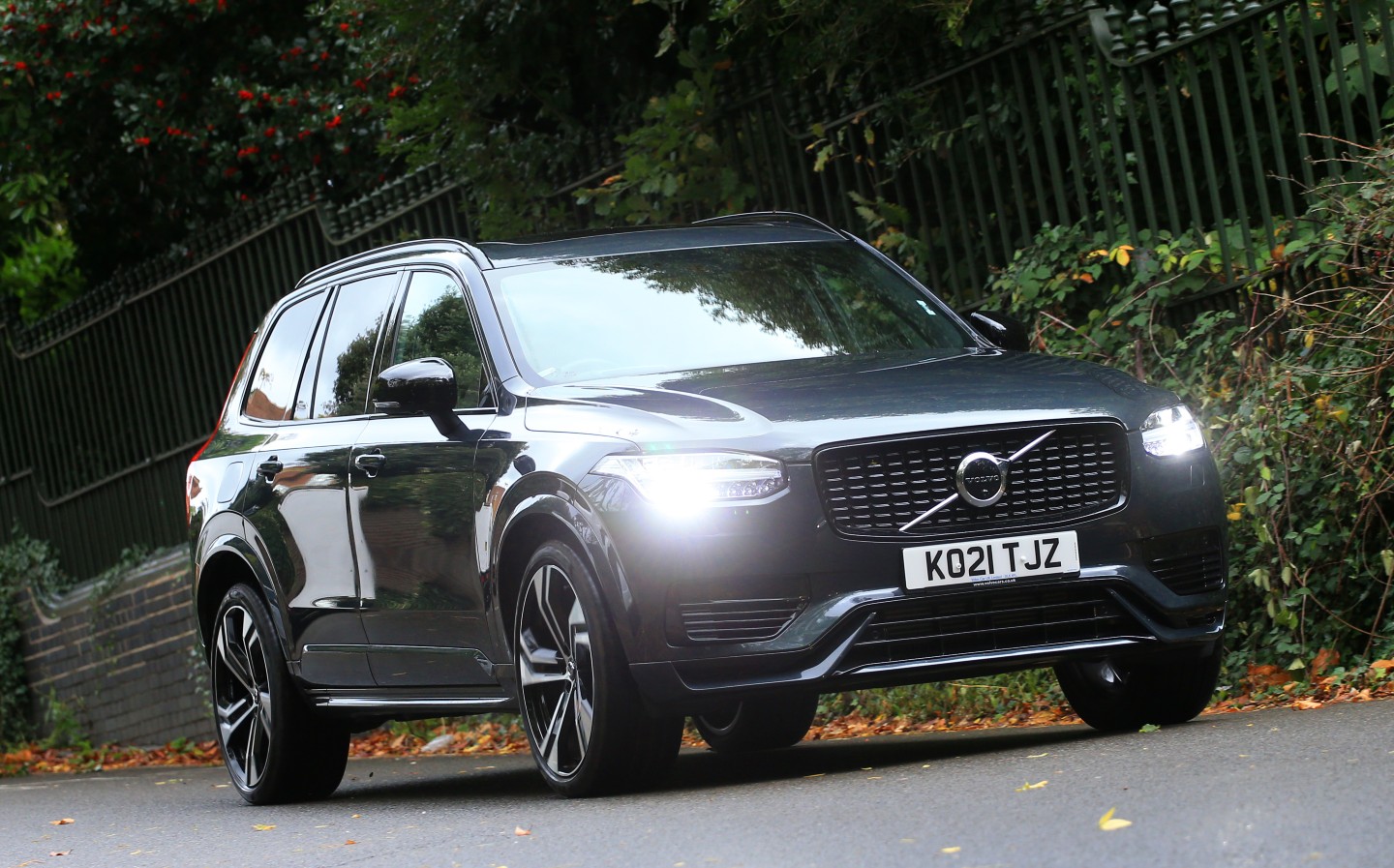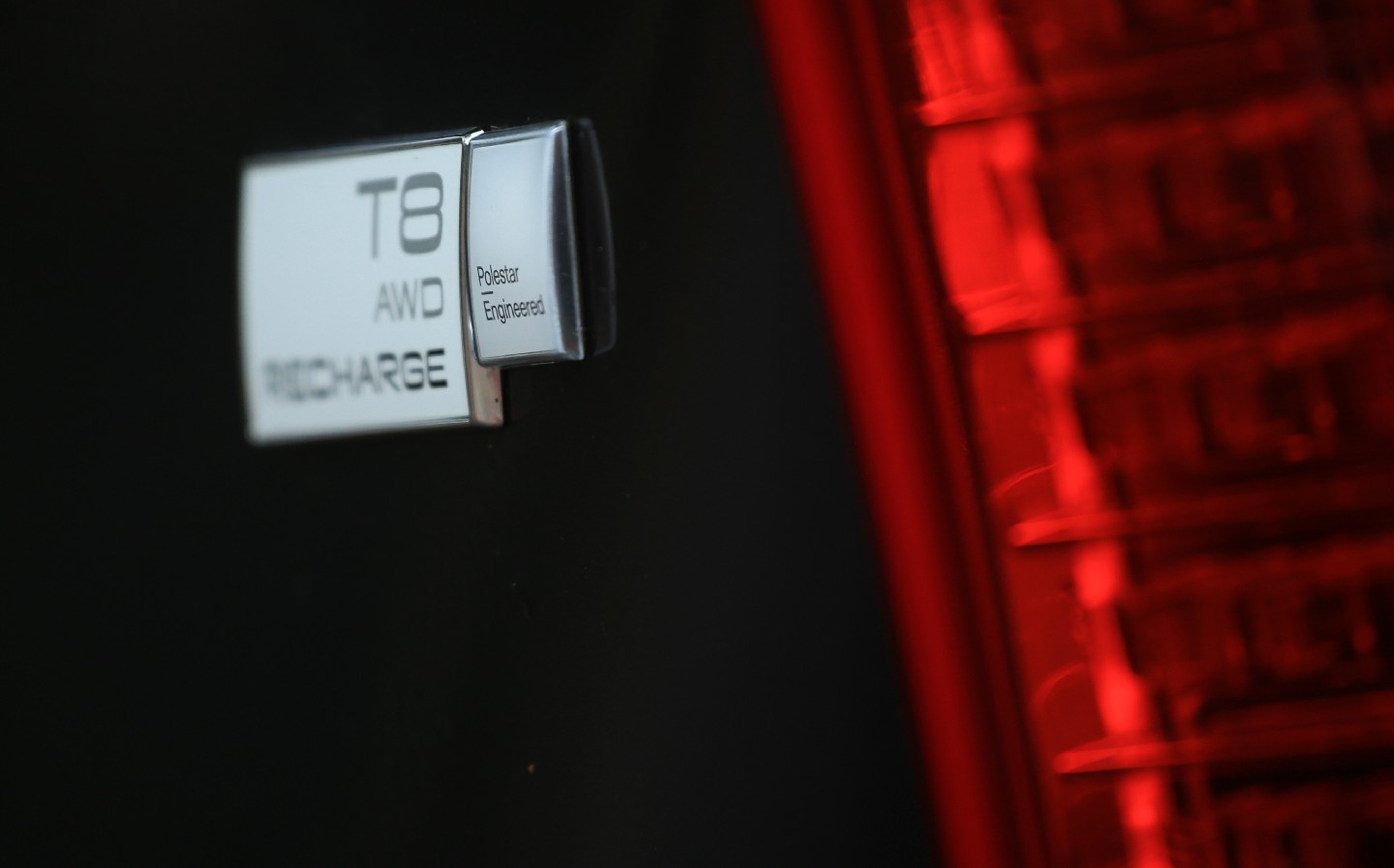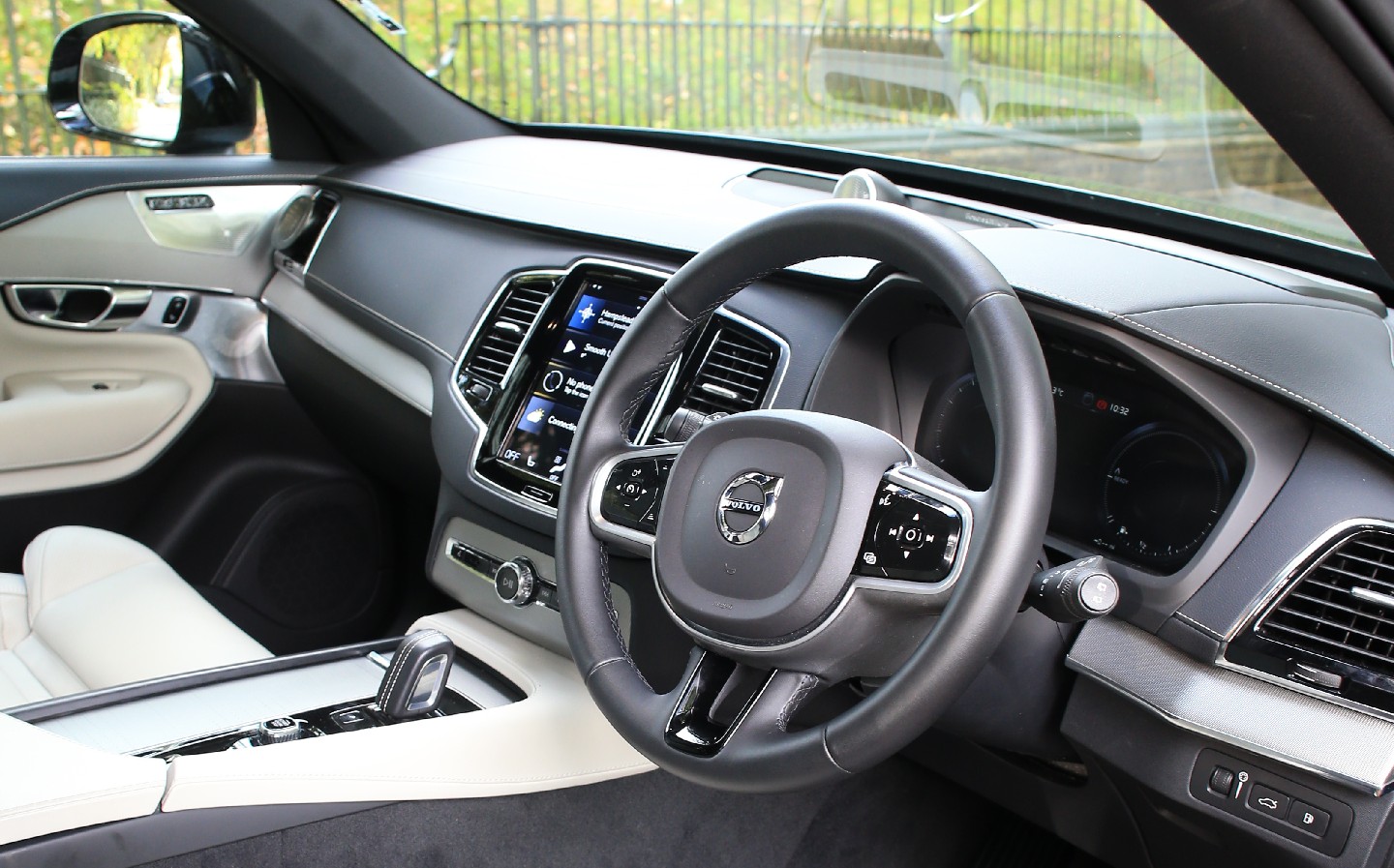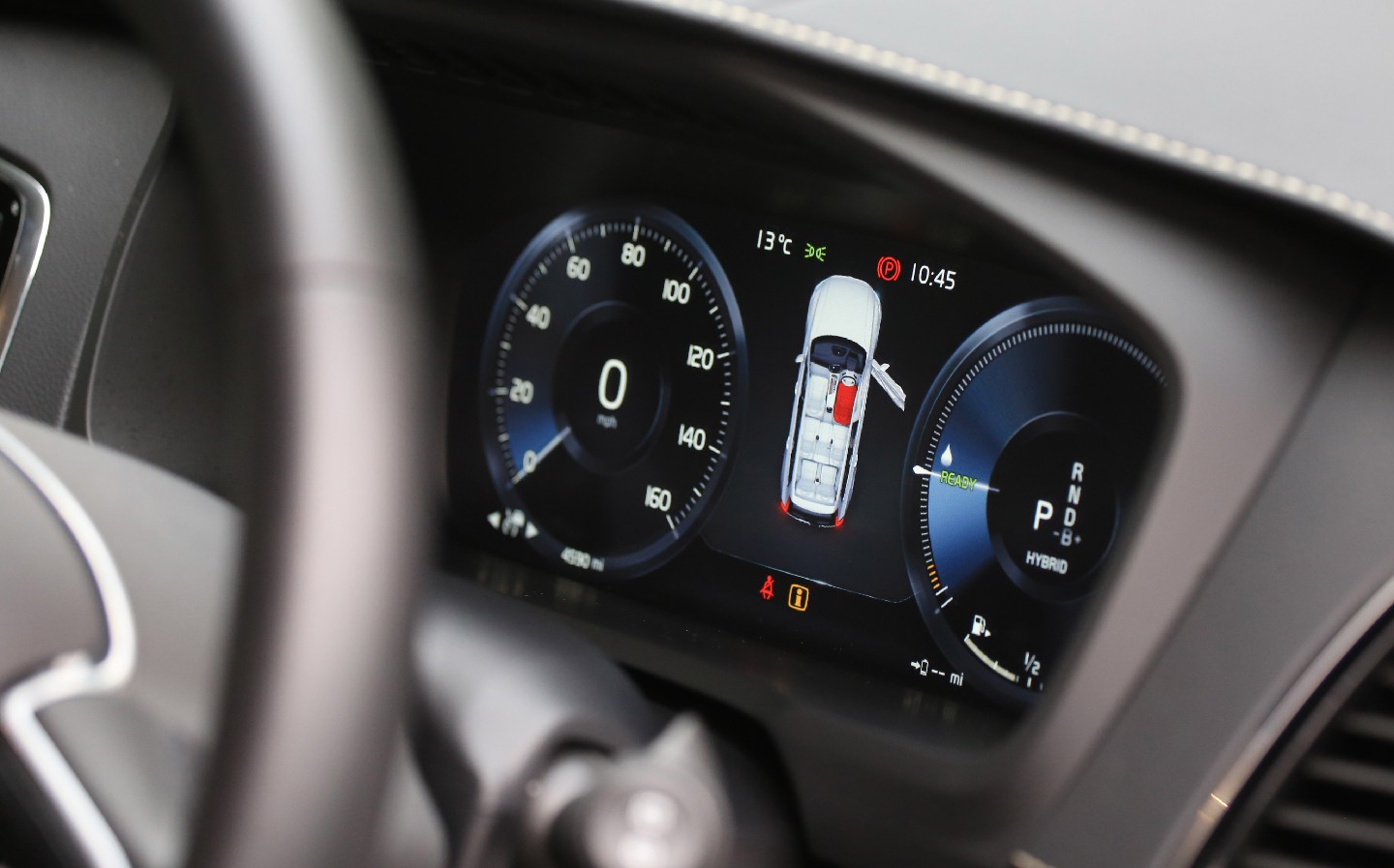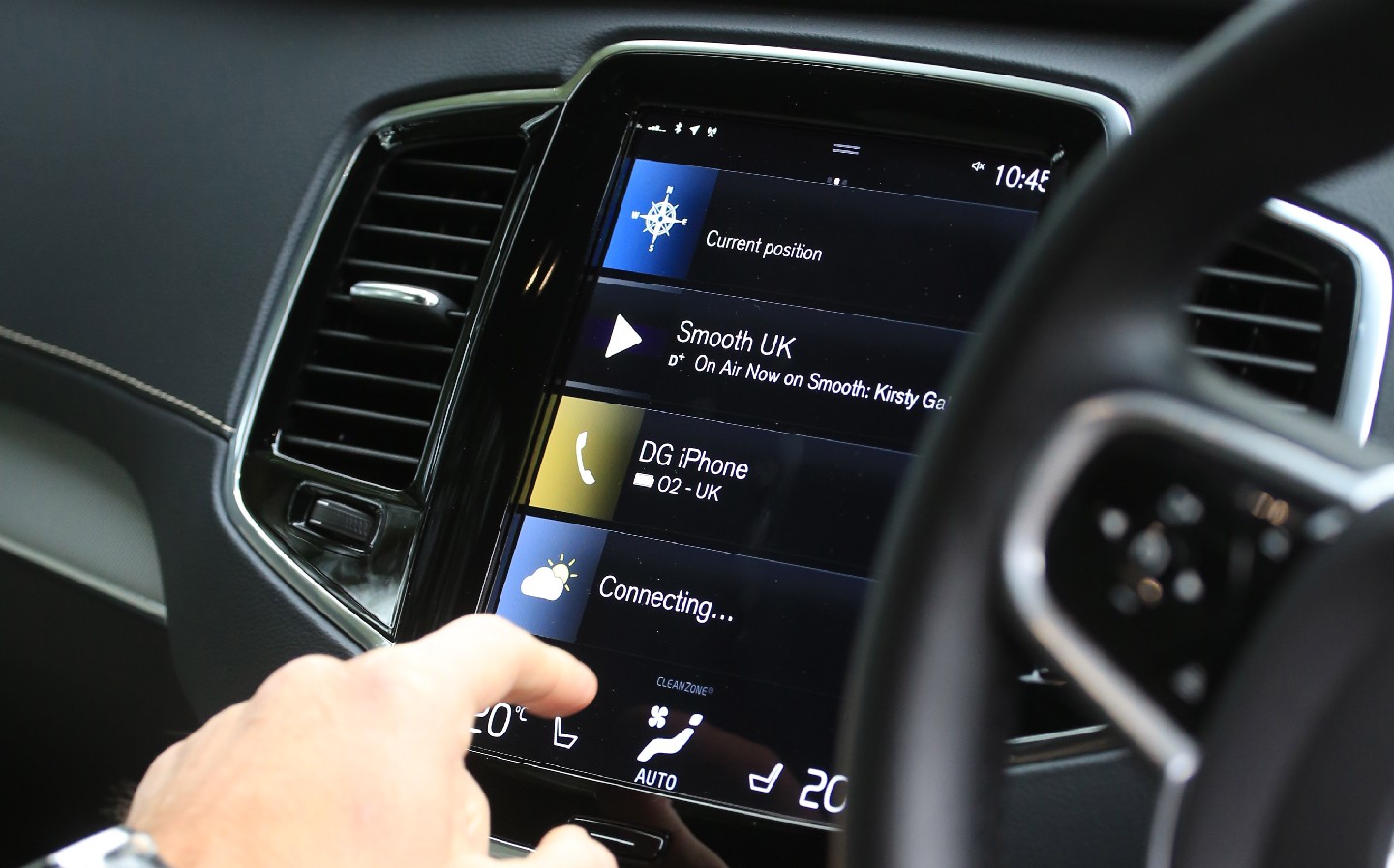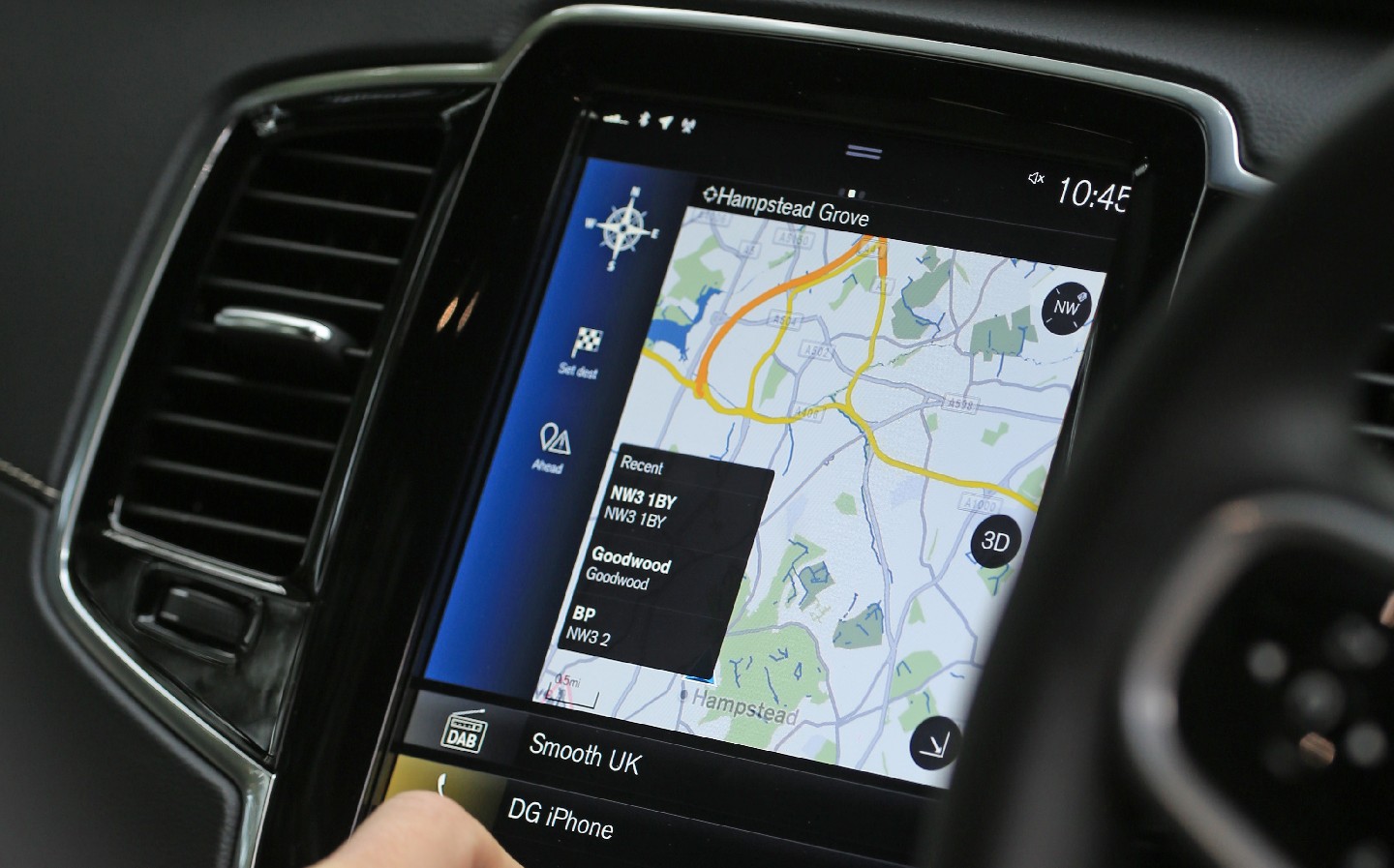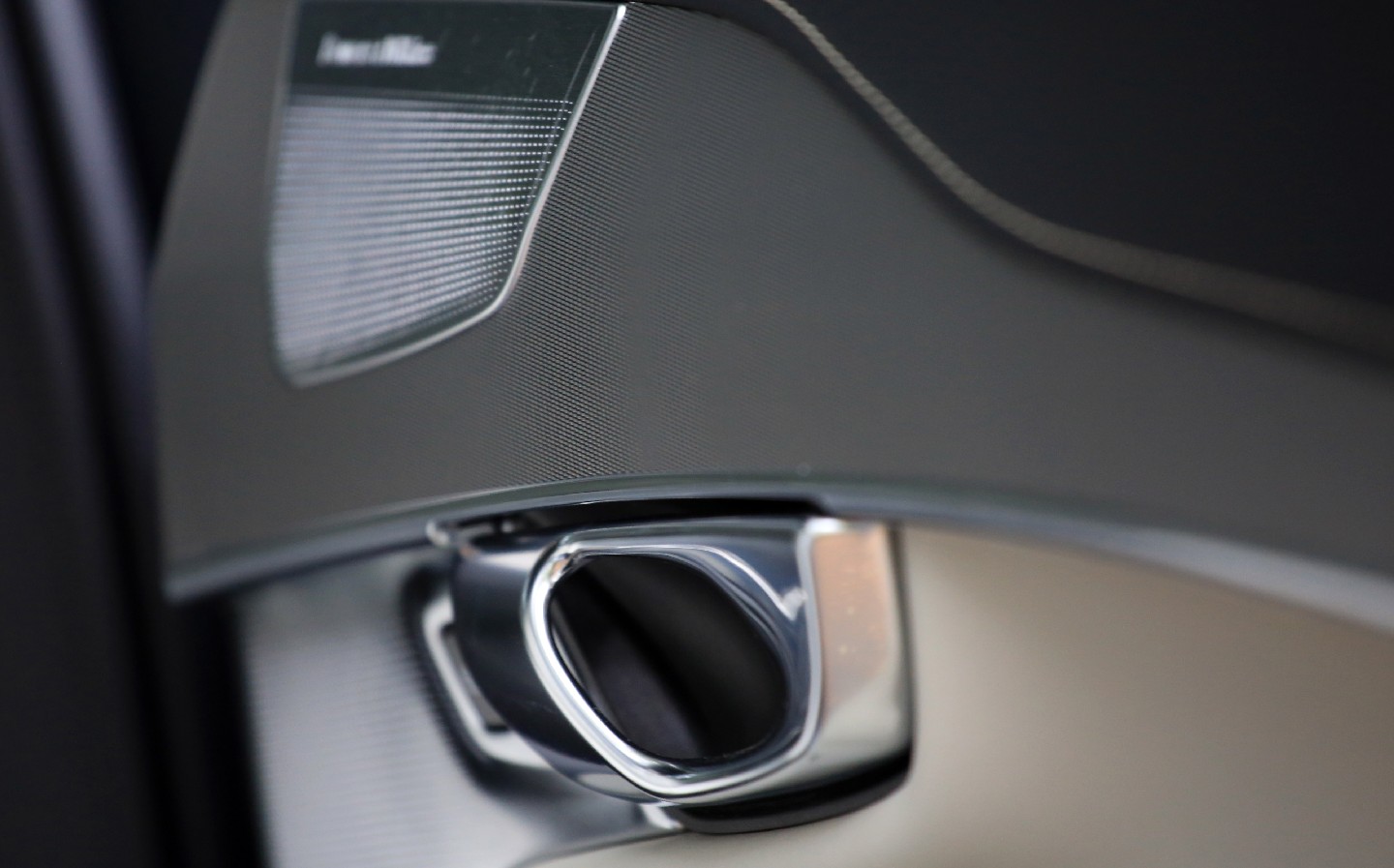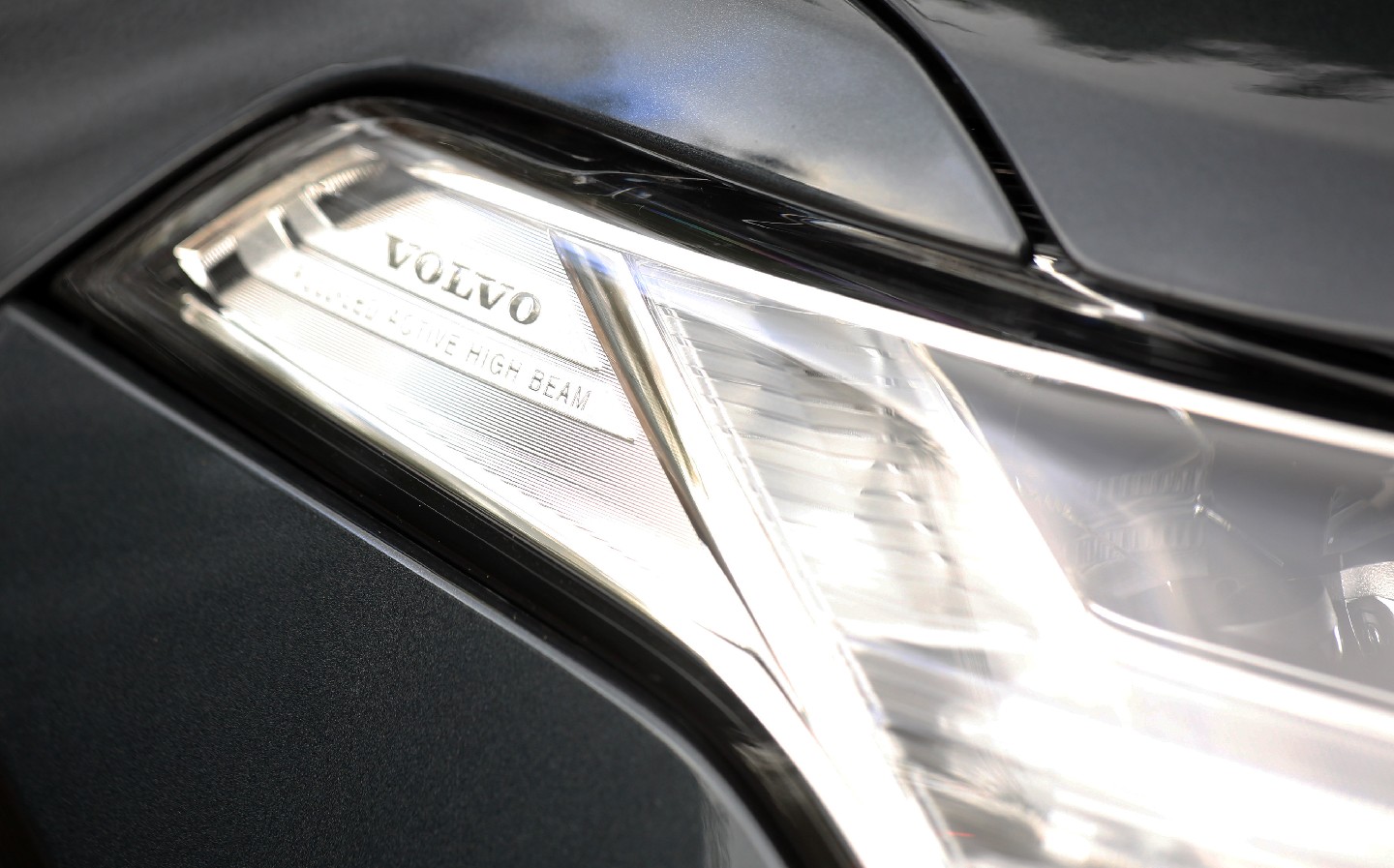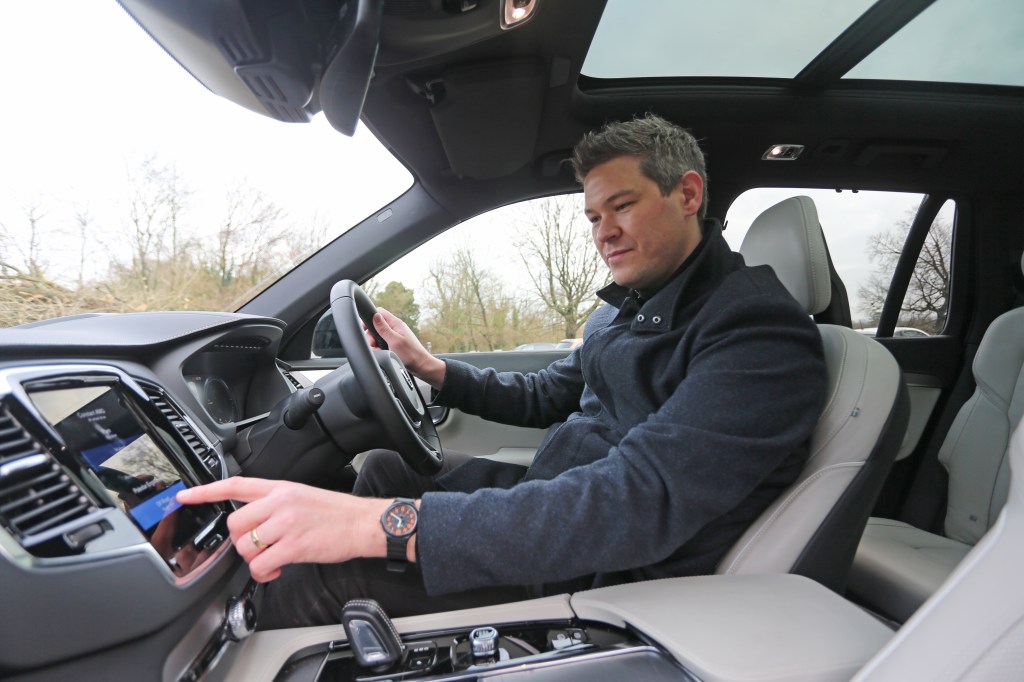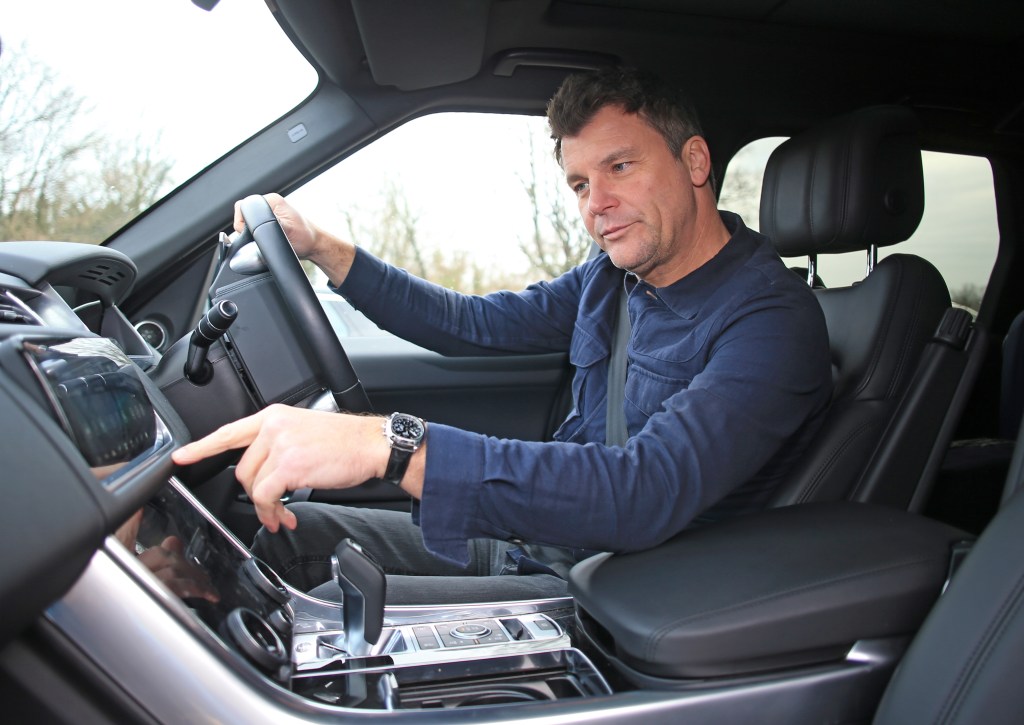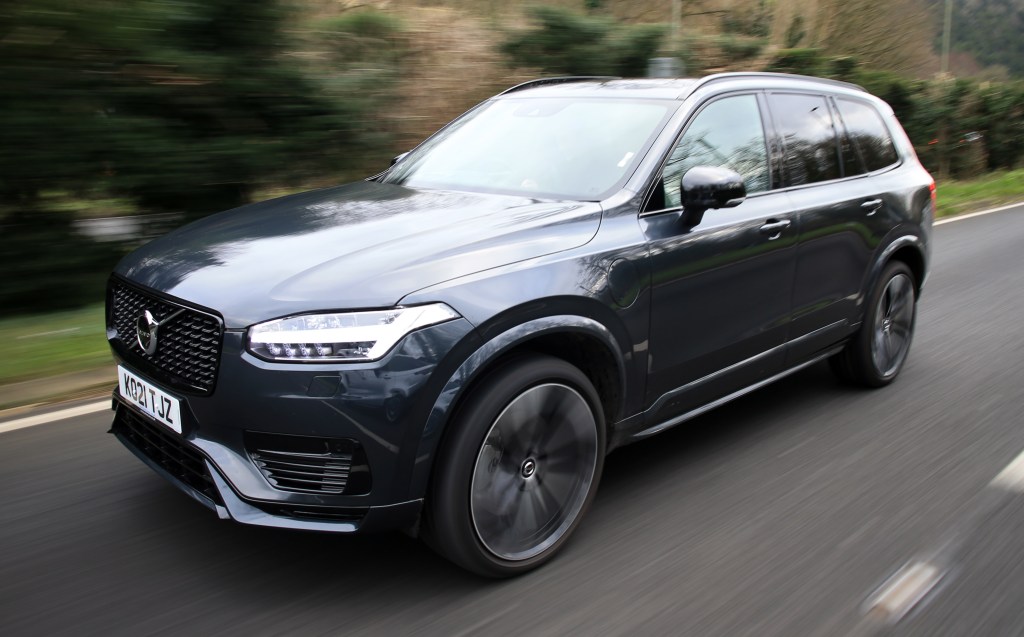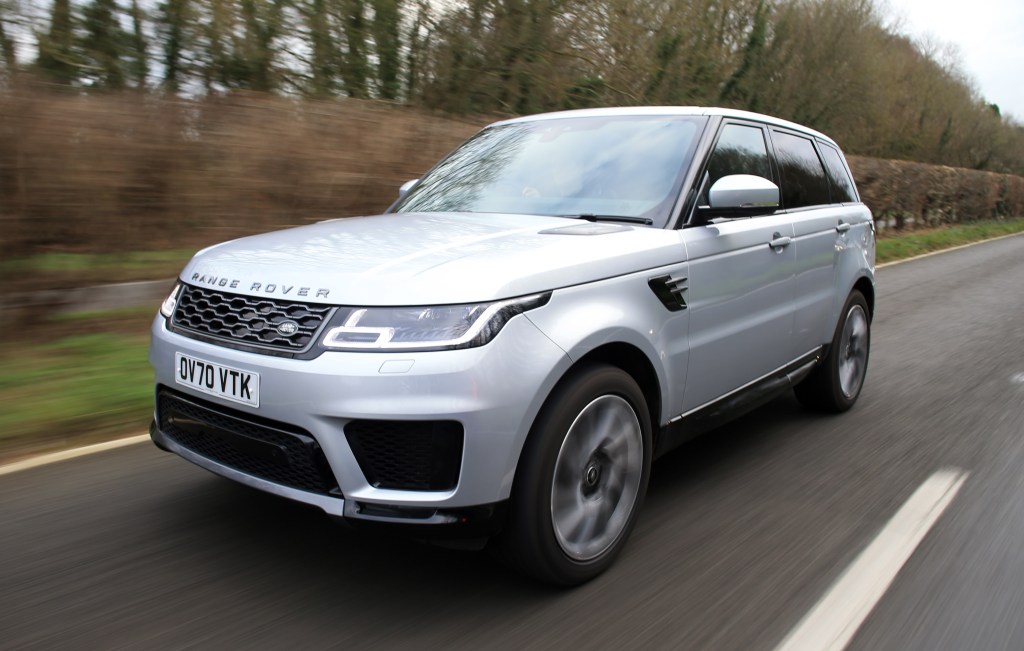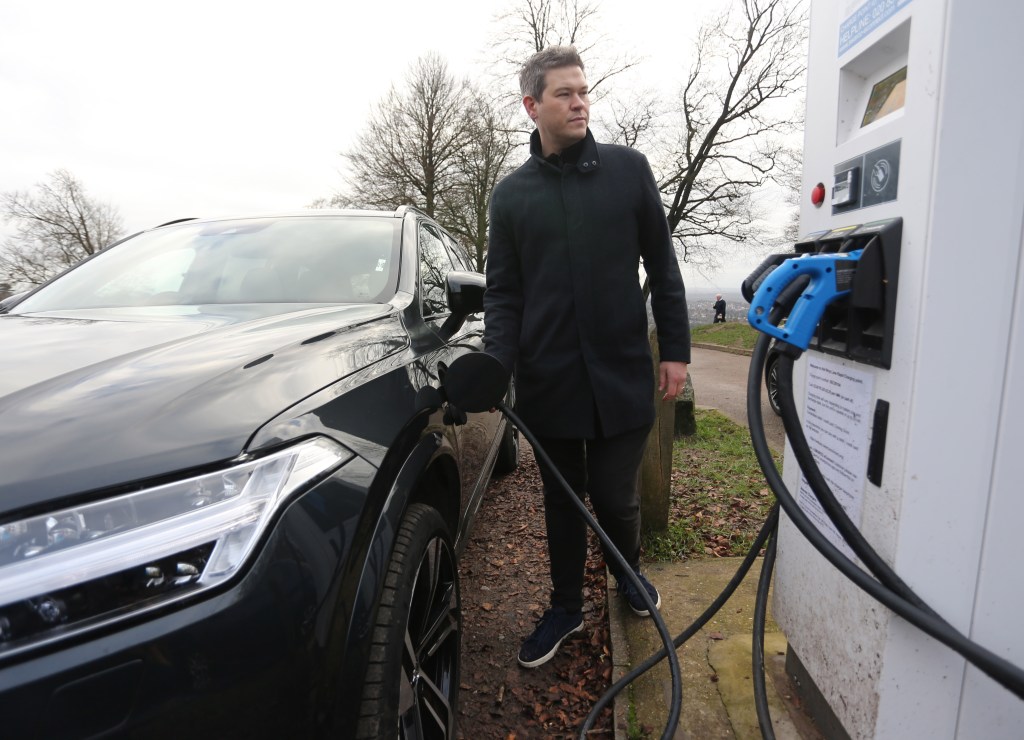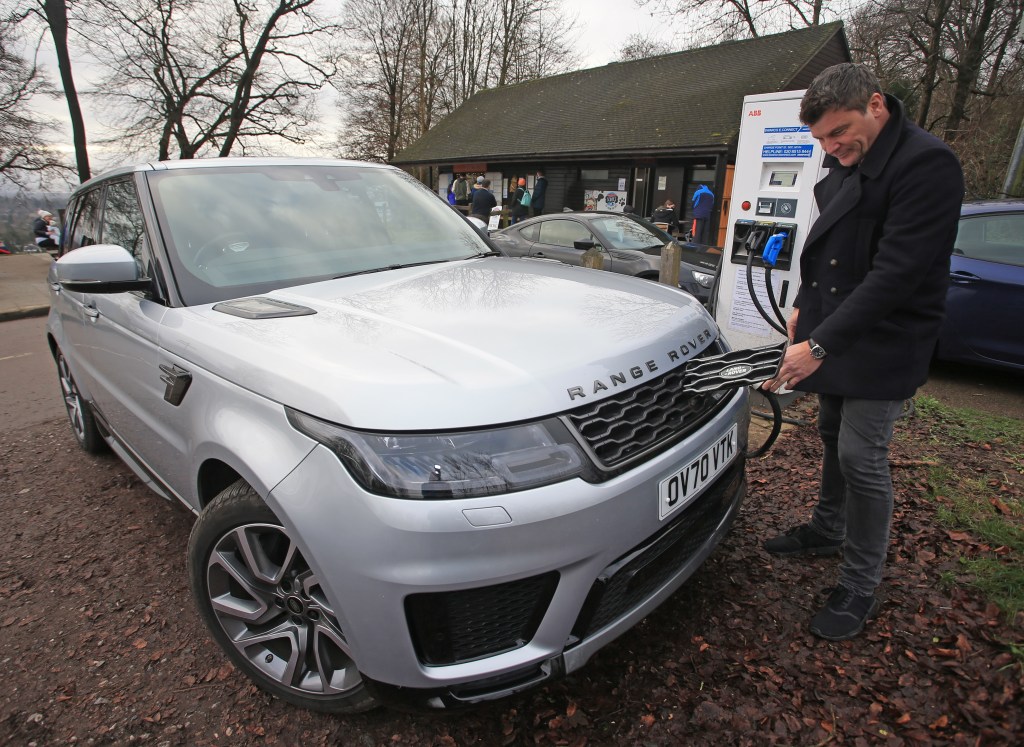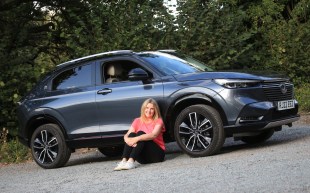Extended test: Volvo XC90 Recharge 2021 review
Times Luxx motoring editor David Green gets to grips with Volvo's big plug-in hybrid SUV
2021 Volvo XC90 Recharge specifications
- Model 21-reg Volvo XC90 Recharge Plug-in Hybrid T8 AWD R-Design Pro
- Price From £74,040 OTR (Includes Lighting Pack: Active Bending Headlights with Adaptive Shadow Technology; Headlight Cleaning System)
- Price as tested (with options) £80,520 OTR
- Cost options fitted Lounge Pack £1,500: Power glass tilt and slide sunroof with sun curtain; Park assist pilot – automatic parallel and 90o parking (includes front and rear park assist); Advanced interior air cleaner. Climate Pack (£575): Heated Rear Seats – 2nd Row, Outer Positions; Heated Steering Wheel; Heated Windscreen. Single options: Sensus Connect with Premium Sound by Bowers and Wilkins with Dolby Pro Logic II Surround Sound £2,150; Polestar Performance Software Optimisation £765; Parking Camera 360° Surround View £525; Wireless/Inductive Mobile Phone Charging £250; Metallic paint (Saville Grey) £715
- Drivetrain 299bhp, 1,969cc, 4-cylinder petrol engine plus 86bhp electric drive motor and 11.6kWh li-ion battery
- Transmission 8-speed automatic, all-wheel drive (petrol engine drives front wheels, electric motor drives rear)
- Power output Up to 390bhp
- Torque Up to 472 lb ft
- Kerb weight (EU / DIN) 2,320kg / 2,250kg
- Max trailer weight (braked / unbraked) 2,980kg / 750kg
- Off road details Ground clearance 212-252mm; approach angle 21°; departure angle 21°; breakover angle 21.3°; wading depth up to the floor at walking speed
- Dimensions Length 4,953mm; Width (folded mirrors) 2008mm; Height 1771mm
- Boot capacity (third row seats in place / third row folded / second row folded) 262 litres / 640 litres / 1,816 litres
- Top speed 112mph
- Acceleration 0-62mph: 5.8sec
- Electric range (WLTP) 27.3-30.4 miles WLTP (31 miles EAER)
- Official consumption (WLTP) 83.1-100.9mpg combined
- CO2 emissions 61-76g/km combined
- Charging time (0-100%) 3 hours using 16amp wallbox; 4 hours using the 10 amp home charging cable
- Road tax £15 for first year; £480 for years two-five; £145 thereafter
- BIK tax payable (2021/22) 17%; £2,735 (20%) or £5,471 (40%)
- Insurance group 45
Test details
Test period September 2021 – April 2022
Starting mileage 2,397 miles
Test updates
- October 15, 2021 Introducing the Volvo XC90 Recharge T8
- November 11, 2021 Hello practicality, safety and performance
- December 28, 2021 Shrugging off the British winter
- February 4, 2022 PHEV face off: Volvo XC90 vs Range Rover Sport
- March 1, 2022 Irritations aside, this is the choice of car for every trip
October 15, 2021: Introducing the Volvo XC90 Recharge T8
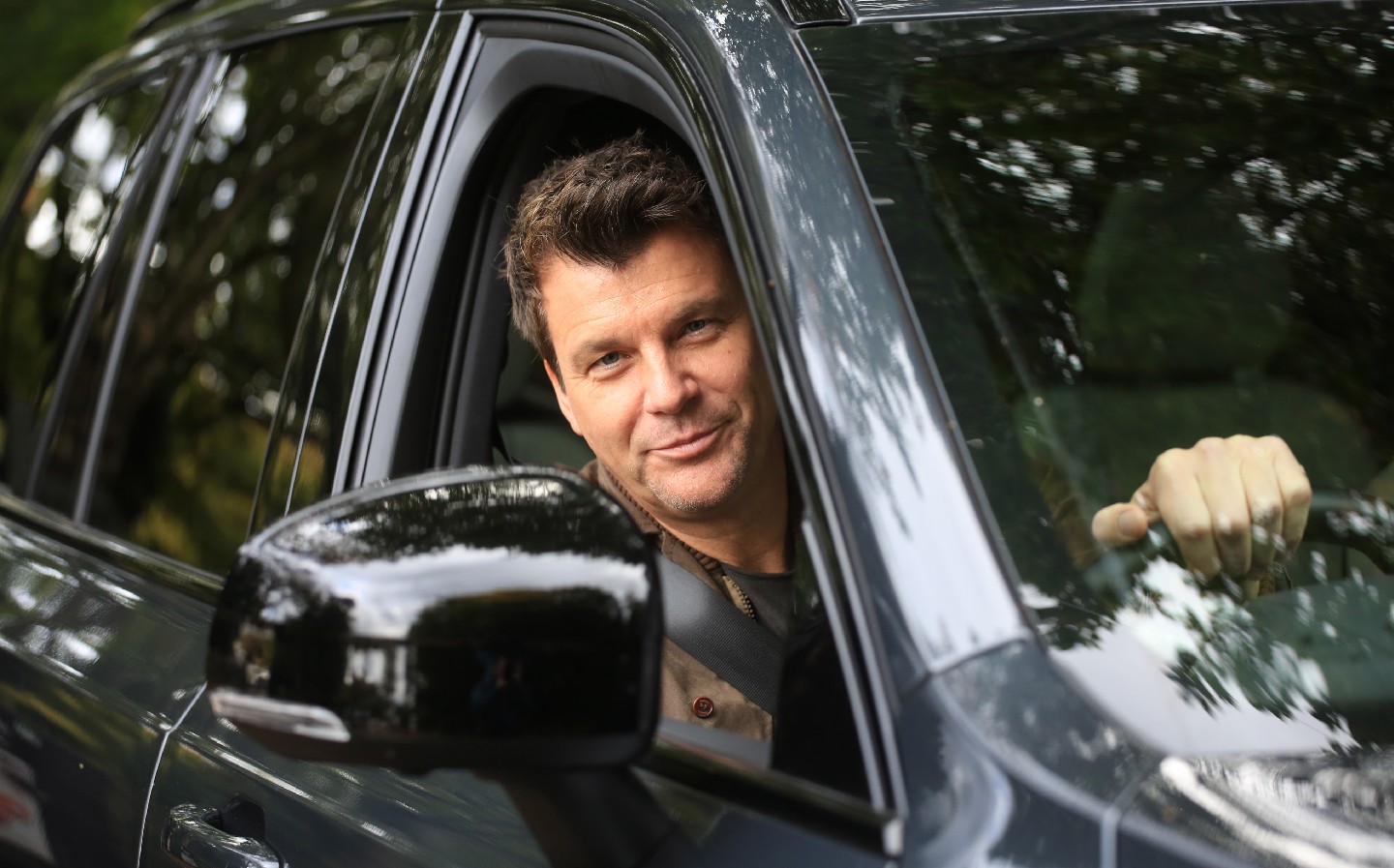
My first month with the XC90 Recharge has been a generally enjoyable experience. A trepidation about a risk-averse Volvo interfering in my life with nanny state beeps and bongs were forgotten after a day in the car, as the XC90 is decidedly rational in the way it interrupts your flow in the cause of safety. Initial impressions are of a car that’s remarkably easy to jump in and drive.
This particular XC90 is an R-Design Pro model. There is a fork in the road of your XC90 purchasing: you can go down the ‘Inscription’ style route, which has an emphasis on luxury with traditional chrome exterior accents and a rather quirky crystal gear lever; but the R-Design route on the other hand is more ‘Sport’ focussed with glossy black trim instead of chrome, and the crystal shifter has gone in place of a more traditional leather-covered one. I’m fine with that.
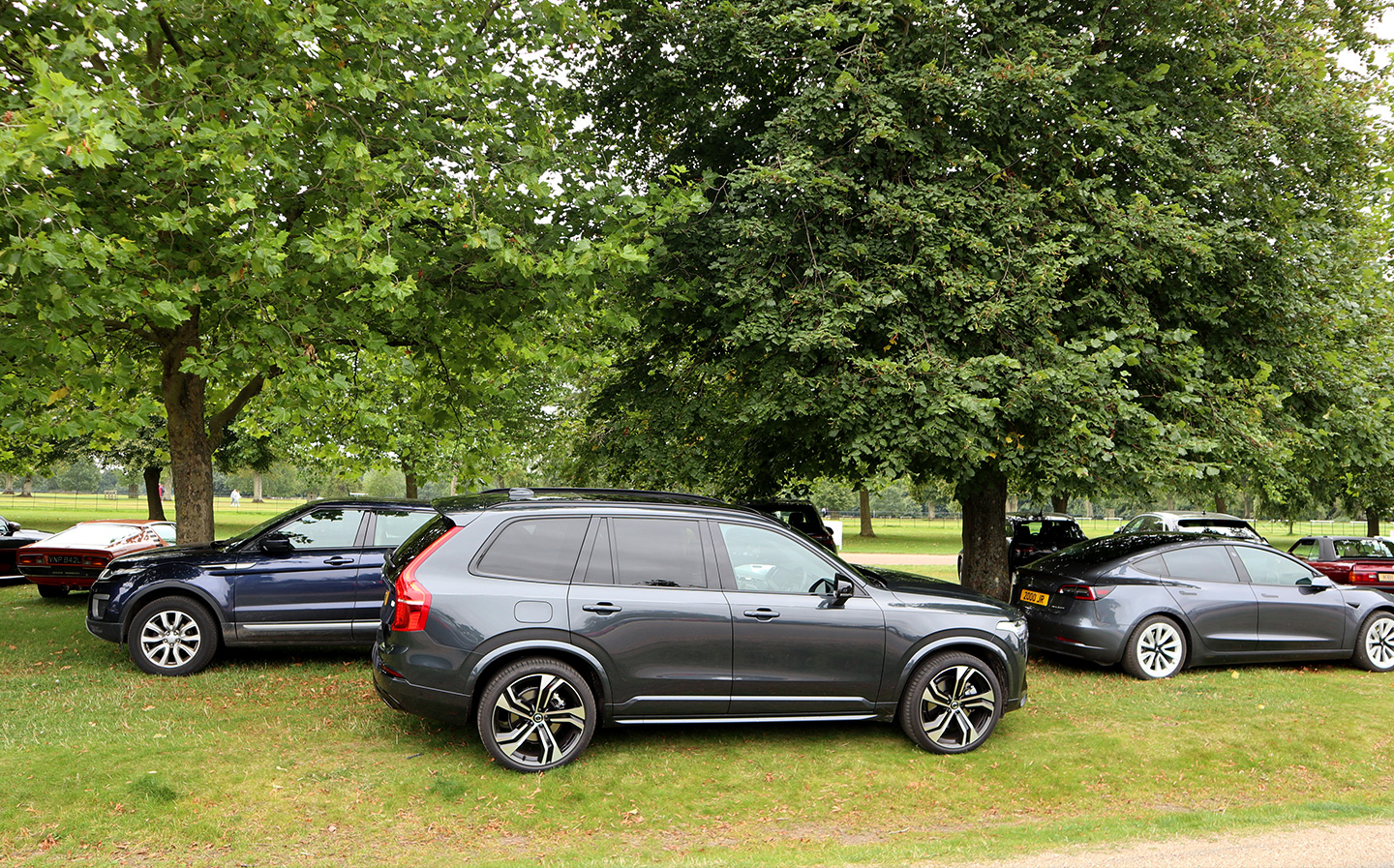
The exterior styling is more Cotswold gangster than Harlem, giving the car a more urban feel, but it still holds its own out in the sticks. The design of the car is growing on me and to my mind, it stands out from the crowd in just the right degree. Not embarrassed of its looks – but not too shouty either.
September is a month of car events such as Salon Privé and Goodwood Revival, involving driving into the country and parking in fields. The R-Design XC90 is perfectly at home moving from tarmac to mud and holds its own among the other SUVs vying for attention in the car park.
Inside, the blonde Nappa leather opens up the large cabin and is helped by an enormous sunroof – part of the £1,500 ‘Lounge’ pack option.
Volvo has nailed its interiors lately. Clean and functional in a way the Scandinavians do well, but it still has an upmarket, luxurious feel. And the Bowers & Wilkins speaker system is a welcome optional extra, its crisp sound further creating a sanctuary from the outside world … and that includes the air.
Volvo’s CleanZone system removes 95% of hazardous PM 2.5 particles. I’m not sure if it’s psychosomatic but it seems to feel fresher inside than the outside London air. A week in and I regularly find myself taking in an exaggerated inhalation of healthy clean air once I am inside and have closed the door.
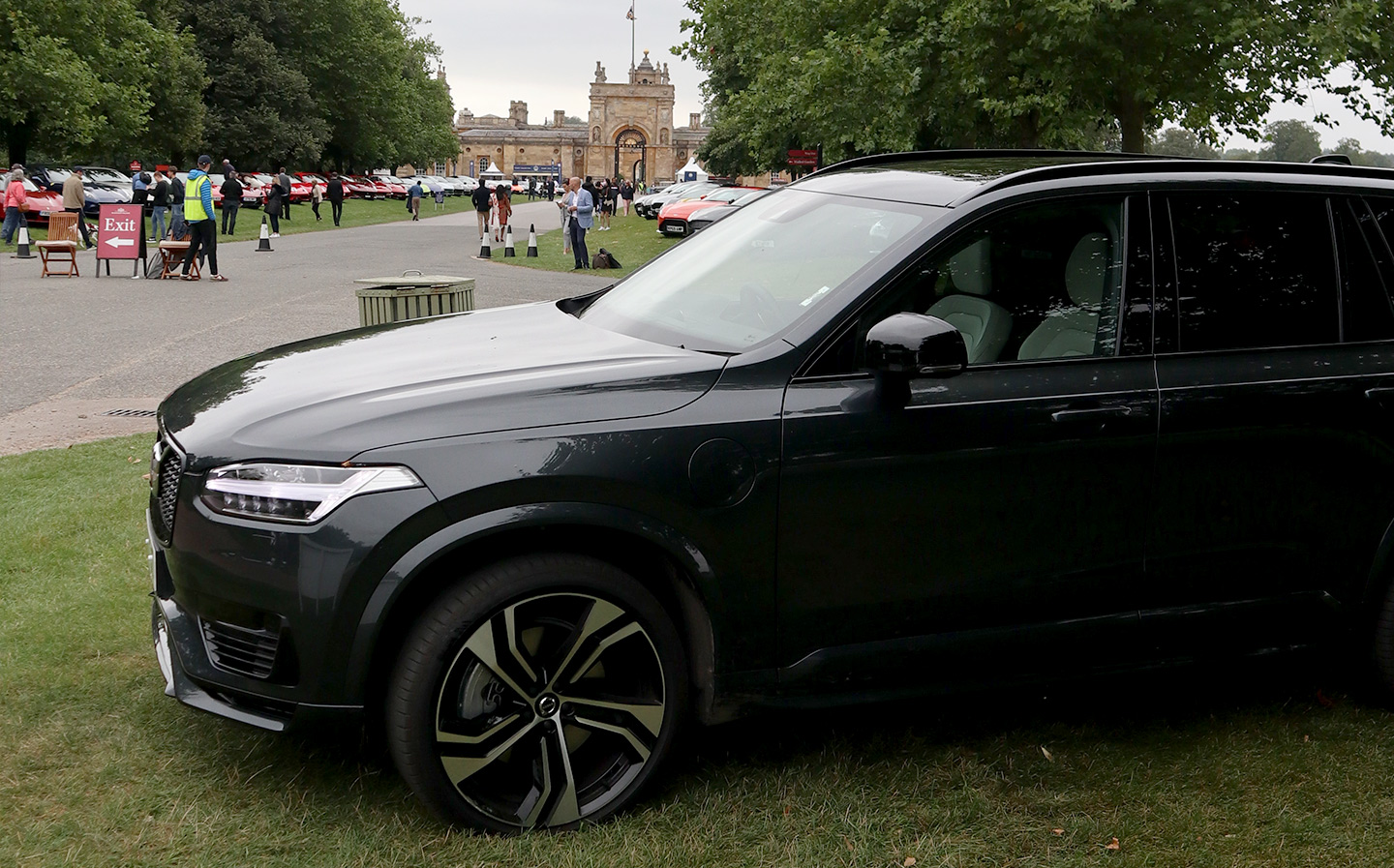
Other people have expressed an opinion of the car. A gas engineer visiting my house commented on the car “Nice. You must be an architect?” I’d always thought that was a Saab vibe but apparently the remaining, non-bankrupt, Scandinavian car company has taken on that mantle. I’m not sure how I feel about the assumption, but guess it could have been a lot worse.
I need to find a better petrol-electric balance going forward with this hybrid car, despite it proving very difficult for me to recharge in central London, without off-street parking. My mission has proven even more challenging due to three of my four nearby chargers being currently out of service.
However, I have managed to get the odd electric top-up and, though I never joined the smug brigade laughing at the queues outside of petrol stations, the XC90 Recharge did prove fantastically helpful around town. It may not go that far in full electric mode – around 25 miles in the real world – but there is a certain comfort in not having 100% reliance on fossil fuels.
Maybe a plug-in hybrid is the answer for these turbulent times? If only the bloody chargers would work.
Distance since start 1,139 miles
Average consumption 32mpg
As always with our extended tests, you can ask questions at any time via Twitter — fire them towards the @ST_Driving account— or drop a query into the comments box below.
Tweet to @ST_Driving Follow @ST_Driving
November 11, 2021: Hello practicality, safety and performance
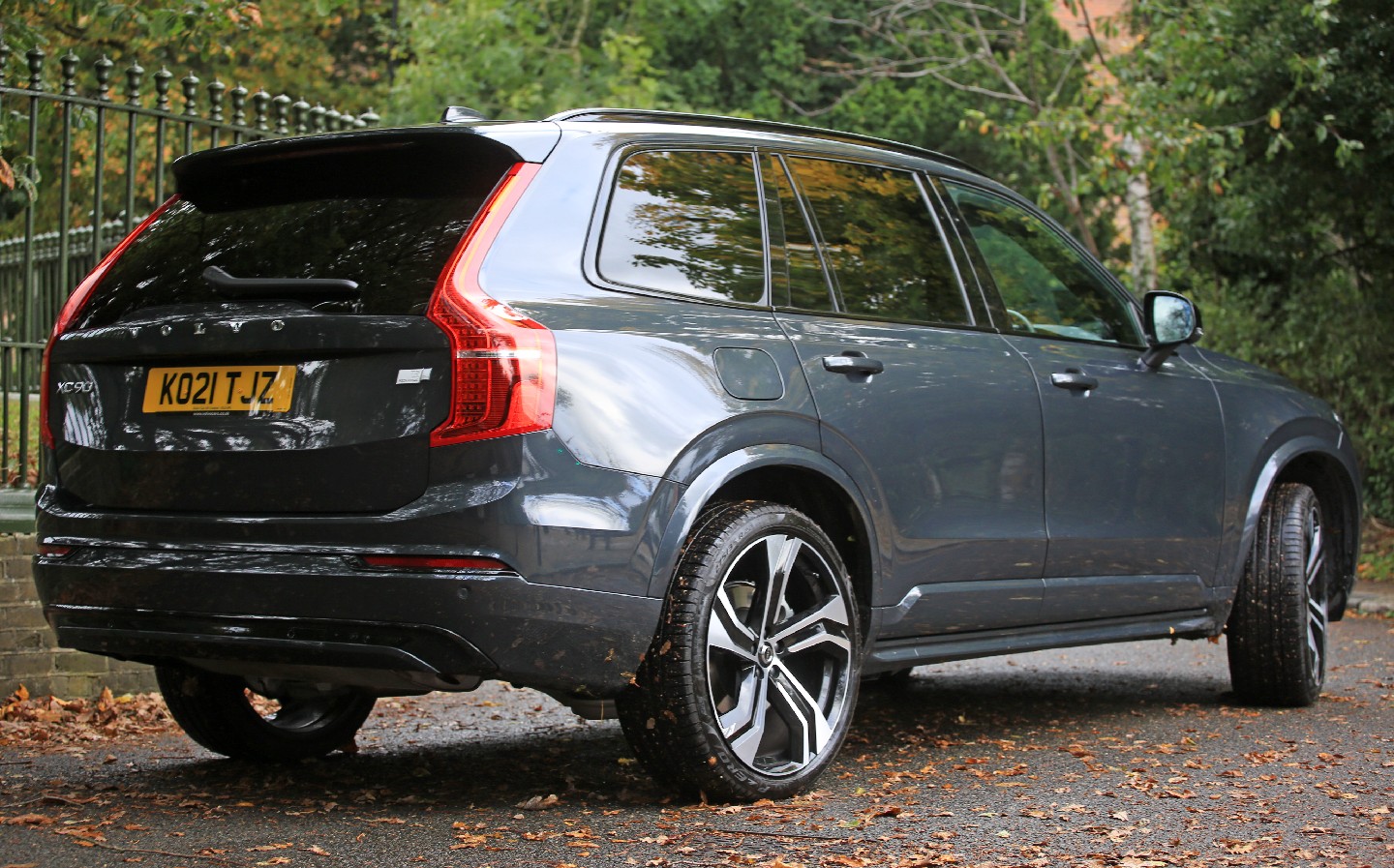
Month two in the XC90 Recharge and the breadth of its capabilities are coming to the fore.
Having had a bit of clear out we headed to the nearest waste centre with a huge amount of unwanted ‘stuff’. Folding all of the seats reveals a 1,816 litres cavernous space that was more than enough for some serious load-lugging… or a trip to Ikea if you want to keep flying the Swedish flag.
I am also learning to appreciate the button on the rear hatch that both closes and then locks the car, allowing you to walk off with your hands full instead of dumping the contents onto the wet road and fumbling for your key fob. It’s the little touches you often find that make you fond of a vehicle.
On the other side of the coin, when you want to lose storage space for seating, the XC90 also excels. Unlike some other plug-in hybrid SUVs, the XC90 retains its 3rd row of seats despite having to squeeze a battery into the package. You lose a small amount of height but those handy couple of seats in the rear are still there to emerge from the flat floor when you need them.
This month I got a chance to try it out as we picked up friends and their three young children. The kids were also entertained by the seats that move silently into position at the push of a button. Another plus is not losing all of the rear storage with the three rows of seats up – we had the usual wellies, umbrellas and coats in the boot, but even with the 3rd row, there is still some luggage space, unlike many seven-seaters. This car is huge.
I maybe wouldn’t want to be an adult on a long trip in that 3rd seating row, but it’s certainly a convincing seven-seater and the optional panoramic sunroof eliminates any sense of claustrophobia for the rearmost passengers.
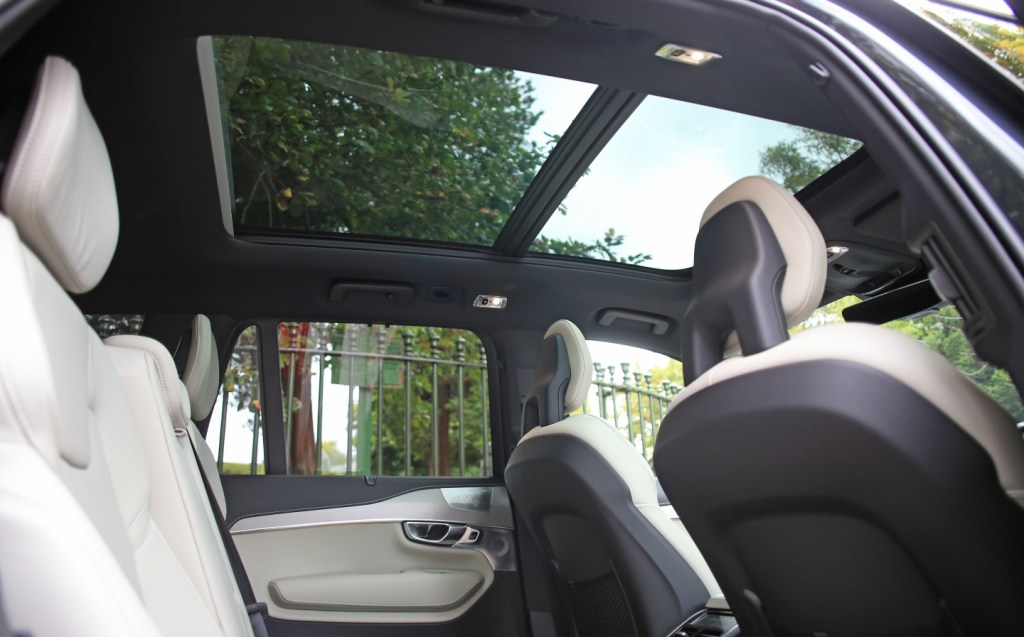
So the XC90 does more than a reasonable impression of both a van and an MPV/ people carrier (remember those?) when you want it to, while still maintaining the bearing of a smart, handsome SUV.
On the downside, I have had a couple of safety intrusions when the car has slammed on the brakes rather abruptly whilst parallel parking. I can only assume it was for a tree or large curb, but whatever caught the attention of the AI it certainly gave me a shock. One time the Volvo stopped so suddenly I was convinced I had hit something.
I applaud safety systems that could help you avoid hitting a pedestrian or dog that has inadvertently wandered behind the car – it’s also genius when reversing out of a drive into a busy road. But I can’t help being a little irritated at being stopped in my tracks, especially in London where your fellow motorist is not exactly the most patient, and ready to sit on the horn as soon as you indicated that you want to park.
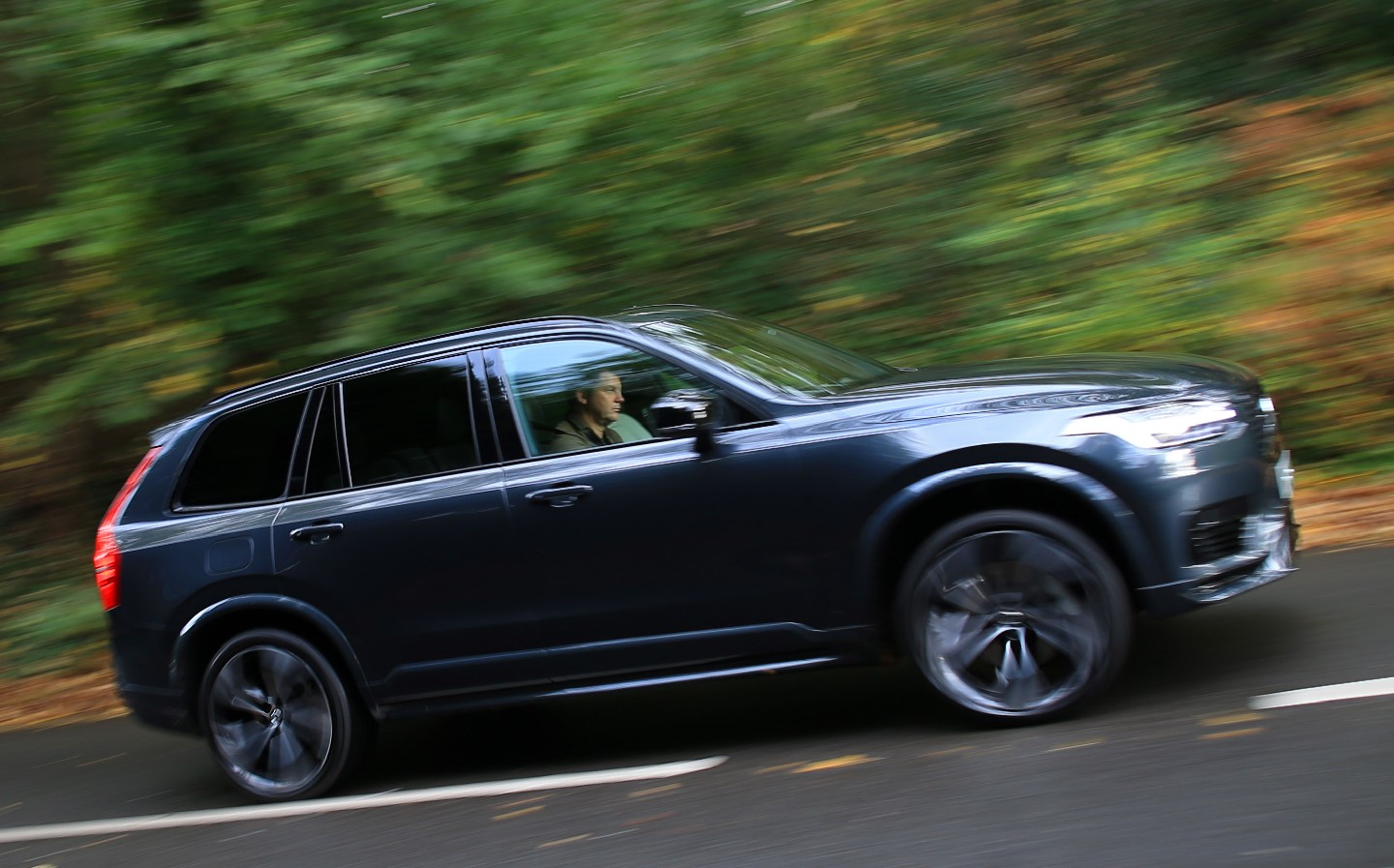
When not going back into a parking space, this car is certainly brisk going forwards. It’s a fast(ish) car, at least for a large SUV. Its 5.5sec to 60mph time is impressive.
But while I like the idea of surprising fellow drivers when the lights turn green, when you hustle the four-pot engine it feels wrong in a car that feels like it is built around serenity and politeness. Also, that rapid acceleration drains the battery when you really should be using that for greater efficiency.
This car knows what it is – a luxurious, practical large SUV, with no pretensions for extreme off-road or dynamic behaviour. It’s a balance that is winning over many fans.
I’ve got to start appreciating that and stop wringing its neck like the sports car it’s trying desperately not to be. I must try to be as mature as my car. Maybe next month.
Distance since last update 1,109 miles
Average consumption 34mpg
As always with our extended tests, you can ask questions at any time via Twitter — fire them towards the @ST_Driving account — or drop a query into the comments box below.
Tweet to @ST_Driving Follow @ST_Driving
December 28, 2021: Shrugging off the British winter
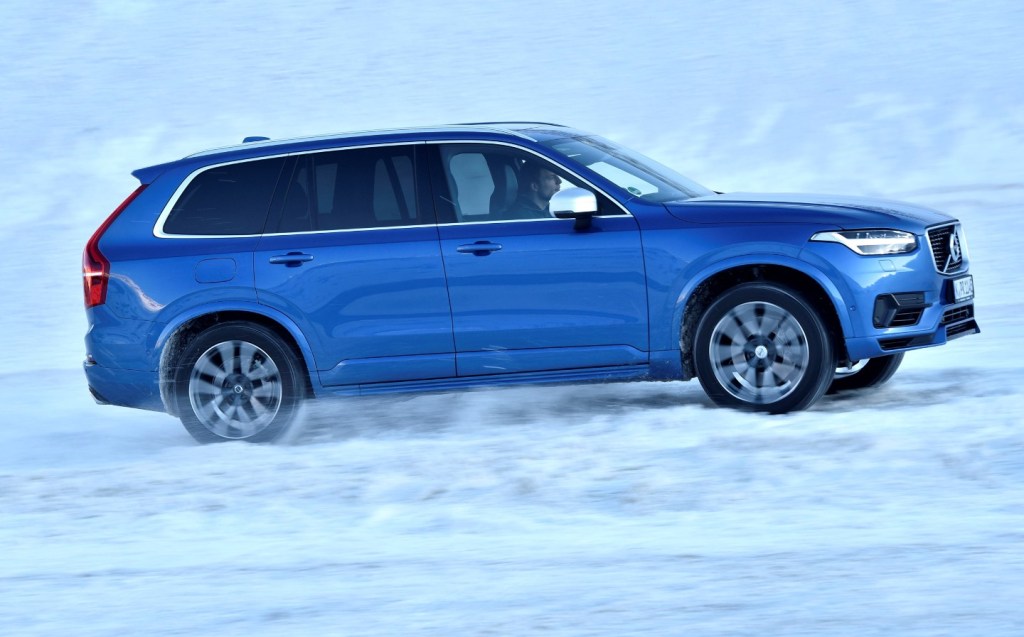
This month my Scandinavian SUV has been flexing its cold temperature credentials. The weather has turned frosty but one thing you can rely on when driving a Volvo is that it has got the icy weather covered. I have driven one in the Arctic Circle at -30° (as pictured in the stock image above) and from the inside I could just as easily been coasting along a Californian freeway … the trifling British climate is no challenge.
If I was a bit more organised I could pre-heat the car via the Volvo app, but even when I have forgotten that it is 2021, I can still jump in and be fairly toasty before I’ve put my seatbelt on.
A heated steering wheel is a tick box I would usually forgo on the options list … yet I’m always glad when I have it. And it is no exception in the XC90. Warm hands and warm backside via the heated seats and the bleak weather is quickly forgotten.
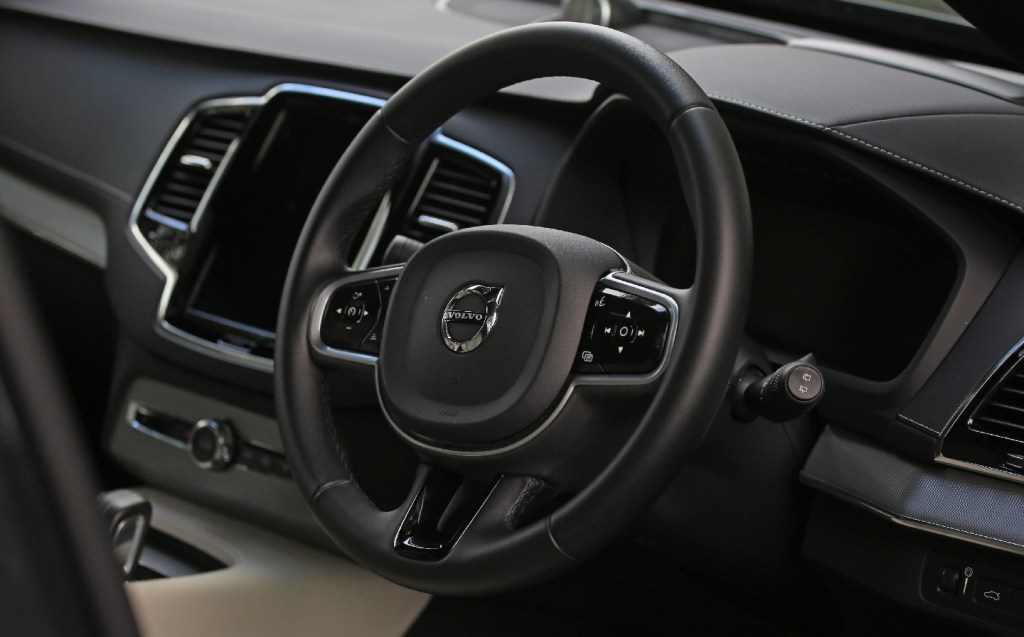
In terms of preparation, I have topped up the windscreen wash — the XC90 greedily consuming a full tub of the ready-mixed stuff. That’s another tick in the plus box for this car. I have an irrational contempt of miserly windscreen wash reservoirs that need frequent topping up — sometimes on the same journey on a murky, wet British drive.
I have had a month of long drives and I have taken the opportunity to explore the Volvos adaptive cruise control. “Pilot Assist” is a semi-autonomous system that combines active cruise control with steering assistance to help keep the car in its lane and a safe distance from a car in front.
It achieves this with clever camera and radar technology, but the everyday benefit is when it is quietly working away to take a little of the strain away from a protracted journey. It enhances the state of calm already achieved by the serene cabin and you arrive from most trips relaxed and refreshed.
It has convinced at least one cruise control sceptic that the technology can indeed assist and is not trying to steal away your driving fun.
“I have an irrational contempt of miserly windscreen wash reservoirs that need frequent topping up”
One thing that is becoming apparent during my tenure with this vehicle is the ubiquity of XC90s, at least in my neighbourhood in London. The other day I was one of five parked in a row on the street. I have never had that with any other car. Somebody in the Volvo product department is getting a healthy end of year bonus as they have seemingly hit the sweet spot with this car when you way up all of its attributes such as design, practicality, economy…and of course cost.
The abundance of fellow owners may give a sense of comfort and safety in numbers. For others, it may find them running to the nearest SsangYong dealer for the chance to differentiate. The choice, as they say, is yours.
Finally, during the festive period the XC90 has been enrolled in Christmas errand duties. Presents, turkey and a case (…or two) of wine are, of course, no problem for such a big car, but would it pass the all-important tree test?

With flying colours, it turns out, as an 8ft fir effortlessly disappears into the back of the SUV. Two Swedish creations in perfect harmony.
Distance since last update 1,245 miles
Average consumption 36.5mpg
As always with our extended tests, you can ask questions at any time via Twitter — fire them towards the @ST_Driving account — or drop a query into the comments box below.
Tweet to @ST_Driving Follow @ST_Driving
February 4, 2022 PHEV face off: Volvo XC90 vs Range Rover Sport

It’s almost like we planned it this way: Driving.co.uk’s editor Will Dron has been testing a plug-in hybrid Range Rover Sport P400e at the same time as I’m assessing the Volvo XC90 Recharge.
The cars are direct rivals, with remarkably similar price points and specification (see table), which made a trip to meet up with Will and compare notes essential.
| Volvo XC90 Recharge T8 AWD R-Design Pro | Range Rover Sport P400e HSE Silver | |
|---|---|---|
| Price from (on the road) | £74,040 | £75,495 |
| Max power | 390bhp | 398bhp |
| Max torque | 472 lb ft | 472 lb ft |
| Max speed | 112mph | 137mph |
| 0-62mph | 5.8sec | 6.3sec |
| Kerb weight (DIN) | 2,258kg | 2,464kg |
| Fuel tank | 71 litres | 91 litres |
| Electric range (EAER) | 31 miles | 25 miles |
| Fuel economy (WLTP combined) | 83.1-104.5mpg | 73.0-88.3mpg |
| Max towing (unbraked) | 750kg | 750kg |
| Max towing (braked) | 2,400kg | 2,500kg |
| Dimensions (L x W x H) | 4,953 x 2,008 x 1,771mm | 4,879 x 2,083mm x 1,803mm |
| Number of seats | 7 | 5 |
| Boot size | 262 / 640 litres | 703 litres |
| Max luggage capacity (seats folded) | 1,816 litres | 1,607 litres |
| Max ground clearance | 252mm | 278mm |
| Wading depth | Up to the floor | 850mm |
The models we are driving, with their various option boxes ticked, are still only separated by a couple of thousand pounds, with the XC90 coming in at £80,520 — a little over Will’s Range Rover Sport’s £78,035. This is a particularly close-fought PHEV SUV sector.
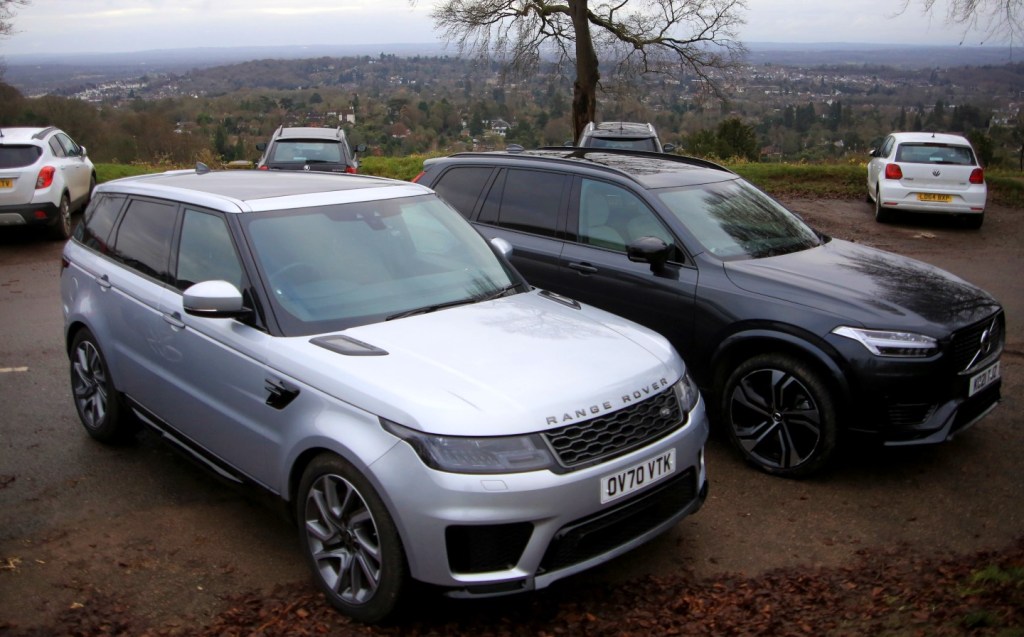
Sitting side by side, the silver Range Rover has similar dimensions to the grey Scandi SUV, both imposing cars at over 2 metres wide and almost 5 metres long.
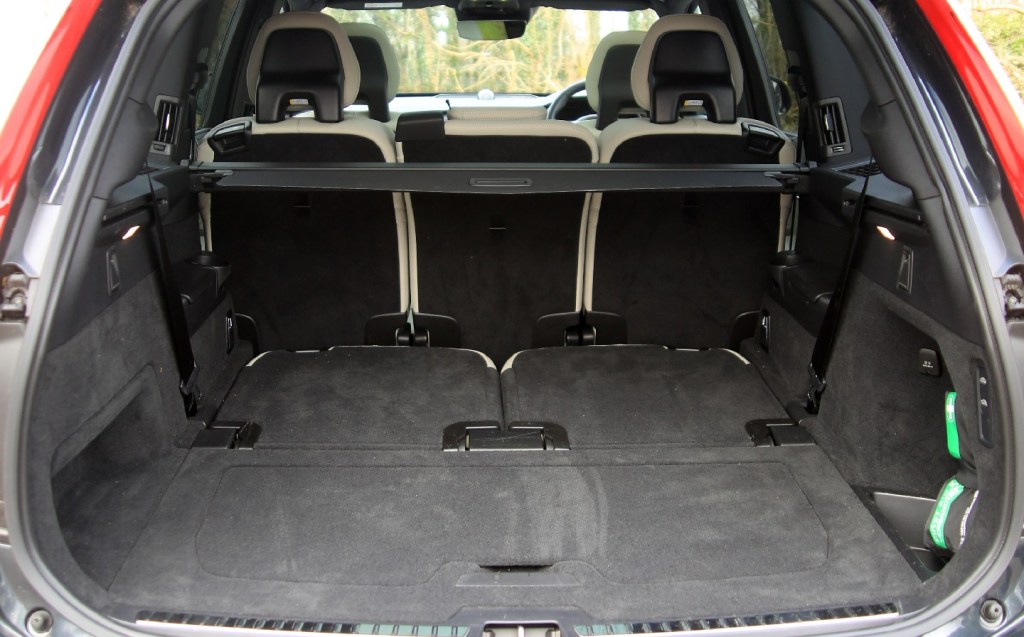
Peek inside and you see that the Sport only has two rows of seats as compared to the XC90’s three, in lieu of the extra batteries it needs to become a hybrid. The Volvo loses a bit of boot space for its battery pack but manages to keep the extra row of two seats, which will be important to some buyers.
Behind the wheel, the Range Rover Sport has an upmarket feel with the leather-trimmed wheel and machined dials and switches, which surprisingly pips the Volvo in terms of quality — it just somehow feels and looks more expensive — though the Scandi chic of the Volvo has its own appeal. With the blonde Nappa leather interior, spec’d on the XC90, it is a calm and welcoming cabin which maybe feels a little less stuffy than the all-black leather in the Range Rover.
The two 10in screens that make up the Range Rover’s Touch Duo infotainment system may be Land Rover’s old tech, replaced by Pivi Pro on newer models, but it still feels a step up from the XC90’s single portrait-oriented touchscreen, which is showing its age a bit more.
Both cars are equipped with premium audio and the Meridian unit in the Range Rover is a match for what is also a fine system in the XC90, by British company Bowers and Wilkins. You can also pay for an even better stereo in the Range Rover, which is no doubt seriously impressive, but the clarity and depth of audio in the Volvo is really superb.
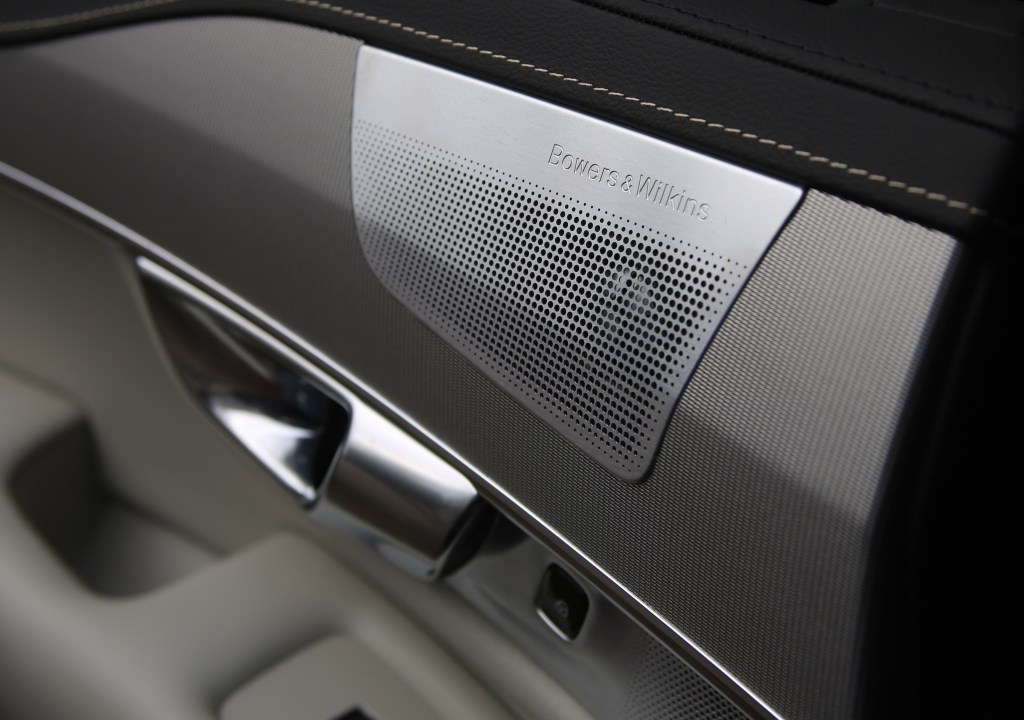
The wide central console in the Sport hides a refrigerated cool box which is a nice and welcome touch on a hot day. And the familiar Range Rover folding armrests are always appreciated and help to get a comfortable driving position.
Both cars are equipped with expansive panoramic roofs and, in general, you are in an elevated, refined position in both cars.
Getting out on the road in the Range Rover Sport after stepping out of XC90, you are immediately aware of its extra heft. It may only be just over 200 kgs heavier, but somehow you notice it and not necessarily in a bad way.
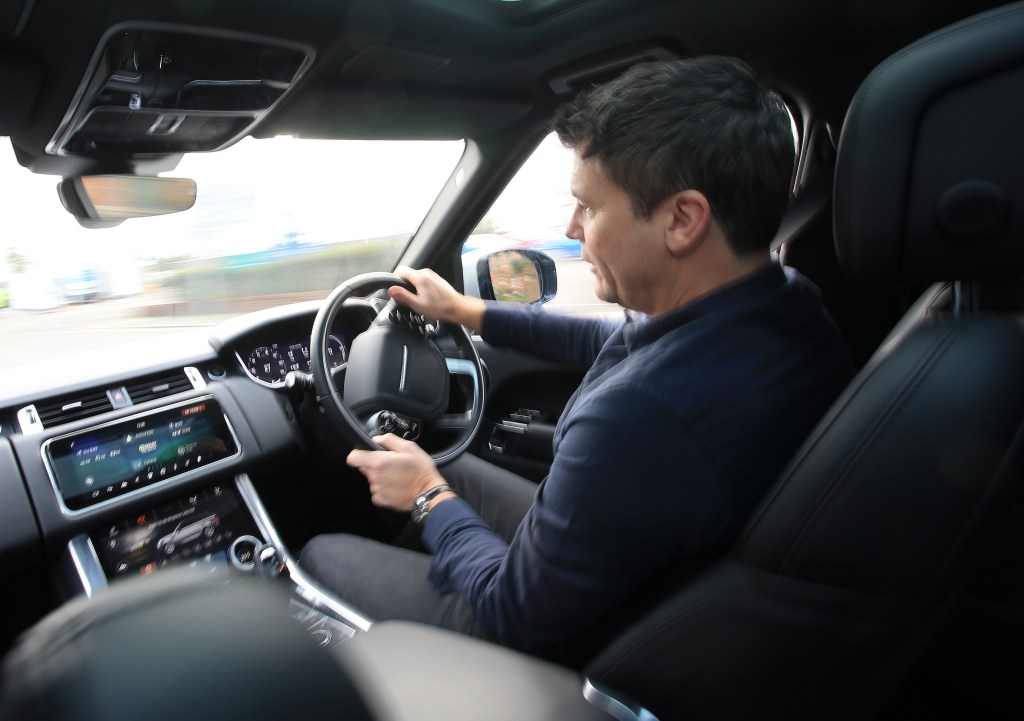
I’m guessing you may feel slightly more assured if you were venturing off-road in the Range Rover, but I suspect that is not the battleground that most purchasers will be fighting over. The XC90 feels more set up for urban adventures with lighter steering that makes it feel a little more nimble and makes manoeuvring into parking spots simple, despite its size.
I didn’t get enough time in the Rangie to experience all the driving aids but it would do well to feel as intuitive as the XC90 which I have come to enjoy over time.
Taking a glance at the spec sheets, you can see the XC90 is a little quicker off the mark and it feels a little more spritely at the lower speeds, however, the Range Rover Sport will march on to a higher top speed if you find yourself on an Autobahn and desperate to hit 137mph in your SUV.
Going up and down the gearbox, if that is your want, is a little more intuitive than in the XC90 with the Swedish car’s subtle, stubby gear selector not inviting the same interaction. But, be warned, in either car, published mpg figures will be wrecked by any heavy-footed action, especially when the batteries are drained. Will said he gets around 31mpg on long motorway runs but nearer 50mpg if keeping the battery topped up, with mostly short journeys and on a mix of roads. Of course, if you drive only on electric then it would be much higher.
In general, there is little to separate the cars save for the number of seats mentioned earlier and a wading depth that is predictably impressive in the Range Rover Sport should you find yourself in deep water. Will recently took his car off-road and it proved astonishingly effective, though a loose wire caused a breakdown on the way home, suggesting the Volvo is the one to pick if reliability is a high priority.
The fact they are so closely matched in price and specification is testament to this competitive sector and what product developers in both the UK and Sweden feel they need to bring to the table and deliver at a certain price. Both are flagship SUVs and I guess the choice, as with most cars, will come down to subtle variations that will be more suited to your particular lifestyle.
Distance since last update 1,477miles
Average consumption 35mpg
As always with our extended tests, you can ask questions at any time via Twitter — fire them towards the @ST_Driving account — or drop a query into the comments box below.
Tweet to @ST_Driving Follow @ST_Driving
March 1, 2022 Irritations aside, this is the choice of car for every trip
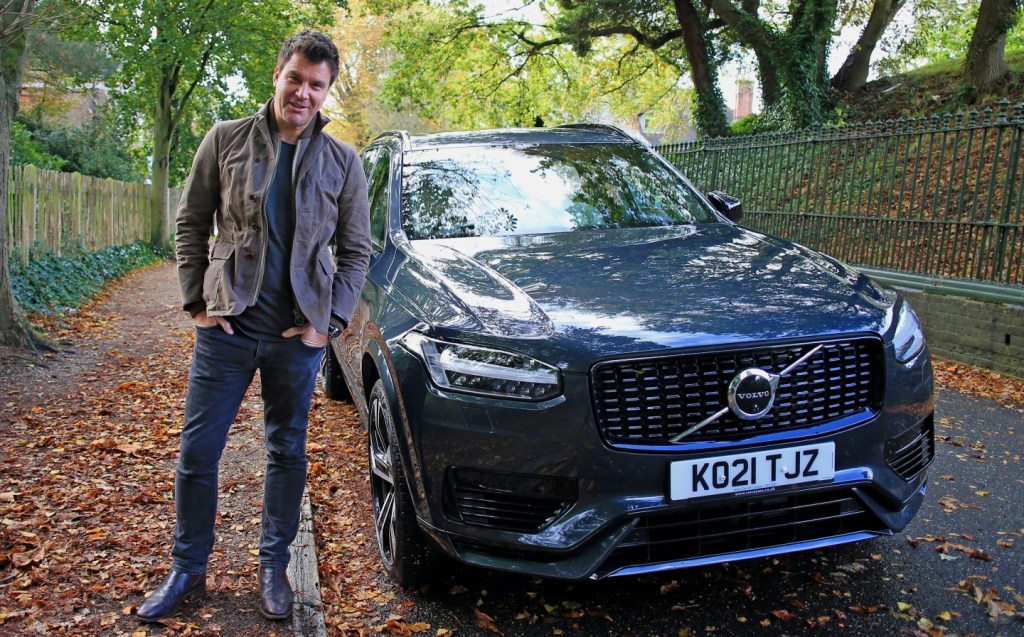
Another month in the Volvo XC90 and we are settling into a comfortable relationship. Gone are the early excitement of working out what everything does and which buttons to press. Most days I jump in, pop my iPhone on the wireless charging pad in the centre console, switch the car on and off we go — pleasant fuss-free motoring.
On the whole, I have grown fonder of this car as time goes by. Yet as with many things in life familiarity breeds, if not contempt, then a little irritation. The fuel cap button is one of those inconsequential things that for some reason still has me tutting (especially in the winter) as I jump out of the car, get the fuel hose ready and realise I still, after five months, have not pressed the cap unlock button from inside of the car on the instrument panel.
My exasperation may be more of a reflection of me than the Volvo, but surely it’s enough that when the car is open, the petrol cap is also open?
While we are on the subject of perceived negatives, let’s discuss wheel size. The R-Design Pro spec on this model does make this particular XC90 stand out from the crowd, even if the crowd in my neighbourhood is typically a bunch of other Volvo XC90s. The wheels look good, but I think if I was going through the buying process I would go for the more run of the mill 19in ones than the 22in optioned on my test car. I can’t help thinking they may suit the ride and the general aim and rationale of this XC90 a little more than the big blingy ones.
Also in London, where you find yourself constantly parallel parking as close as possible to large, often jagged and uneven kerbs, the alloys are a concern. Mostly these kerbs are higher than the ribbon of rubber on the 22in wheels and your casual swing into the parking bay routine is disturbed by nerves and trepidation that you could hear that dreaded grinding noise as you cosy up to the kerb.
And it’s not just parking. London’s frequent width restrictions with high kerbs on either side are particularly taxing for a vehicle of this girth, shod with big shiny alloys. A healthy sidewall of rubber would alleviate these hazards, at least psychologically.
Minor irritations aside, the XC90 continues to impress. Overall it’s the calm and refinement that the cabin offers, and the get in and go nature of the car, that increasingly draw you in. If I had a stable of cars to pick from, I would bet that the Volvo would win the first pick prize every month of the year.
Of course, now and again, I would pick the mid-engined supercar that would undoubtedly feature in my fantasy garage for a furious country lane dash. If the weather was perfect and I could guarantee to be not too far from mechanical help, that pristine classic piece of automotive history in my mental carport would get an airing.
But for simple everyday motoring, I know that even with my dream collection of automobiles on hand I would, even if it was with a degree of resigned reluctance, be reaching for the keys of Volvo for the vast majority of the time.
Trip to the supermarket? Best take the XC90.
Pick my mother up from the train station? That’ll be the Volvo.
A long drive to a wedding in the countryside with luggage and calls to make on the way? That’ll be much easier in the XC90.
Might need more than five seats? It will have to be the Volvo.
Brother wants to help him move some furniture? Only one real choice for this.
Sport Utility Vehicles, and in particular big SUVs, are oft-maligned as unnecessary, big and brash, but when you have one in your armoury, and it’s a well-appointed Swedish model with a certain mellow, pragmatic appeal, it’s not unnecessary, at all — it’s indispensable.
Related articles
- If you’re enjoying this extended review of the 2021 Volvo XC90 Recharge T8, you might like to take a look at our other long-term car reviews
- You might also like to see our guide to the car makers’ electric vehicle plans
- And if you’re a Volvo fan you might be interested to read that Volvo has launched a new eco-friendly shoe in collaboration with Casca
Latest articles
- Aston Martin Valkyrie AMR-LMH hypercar hits track ahead of 2025 Le Mans challenge
- Porsche has begun testing the electric Cayenne
- Cupra Leon 272 eHybrid 2024 review: Bigger battery, better tech … but is it a Cupra?
- Porsche 911 GTS 2024 review: Hybrid heresy or more Stuttgart genius?
- Extended test: 2023 Vauxhall Astra Sports Tourer GS PHEV


